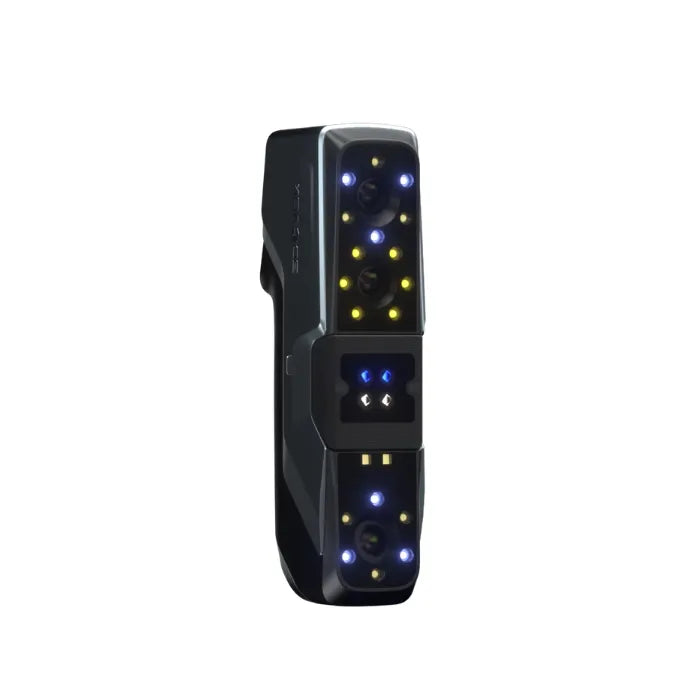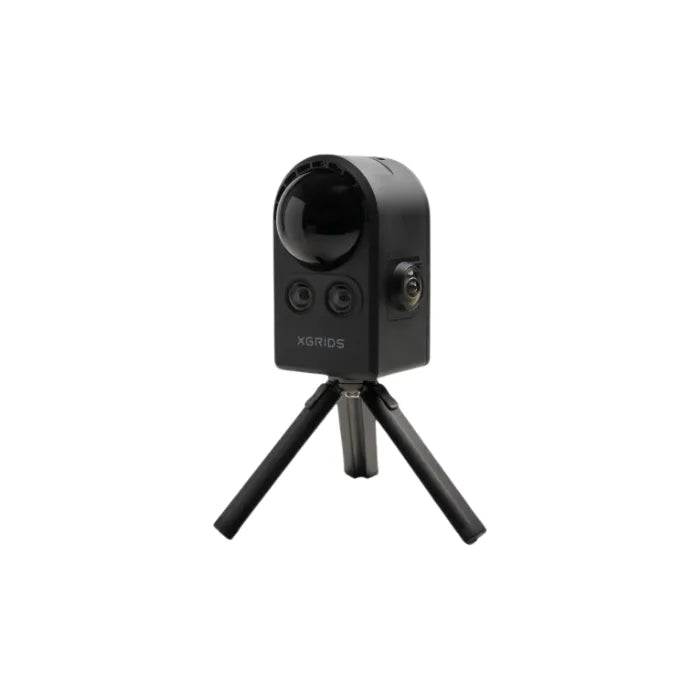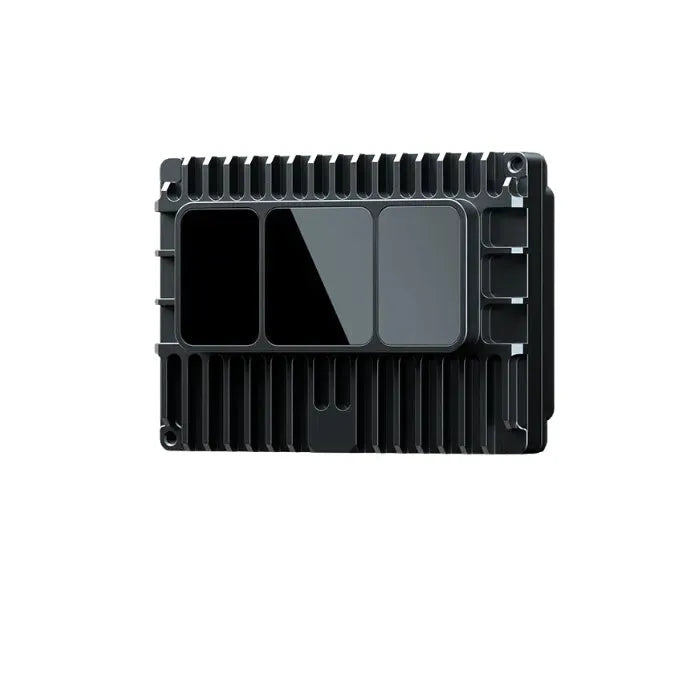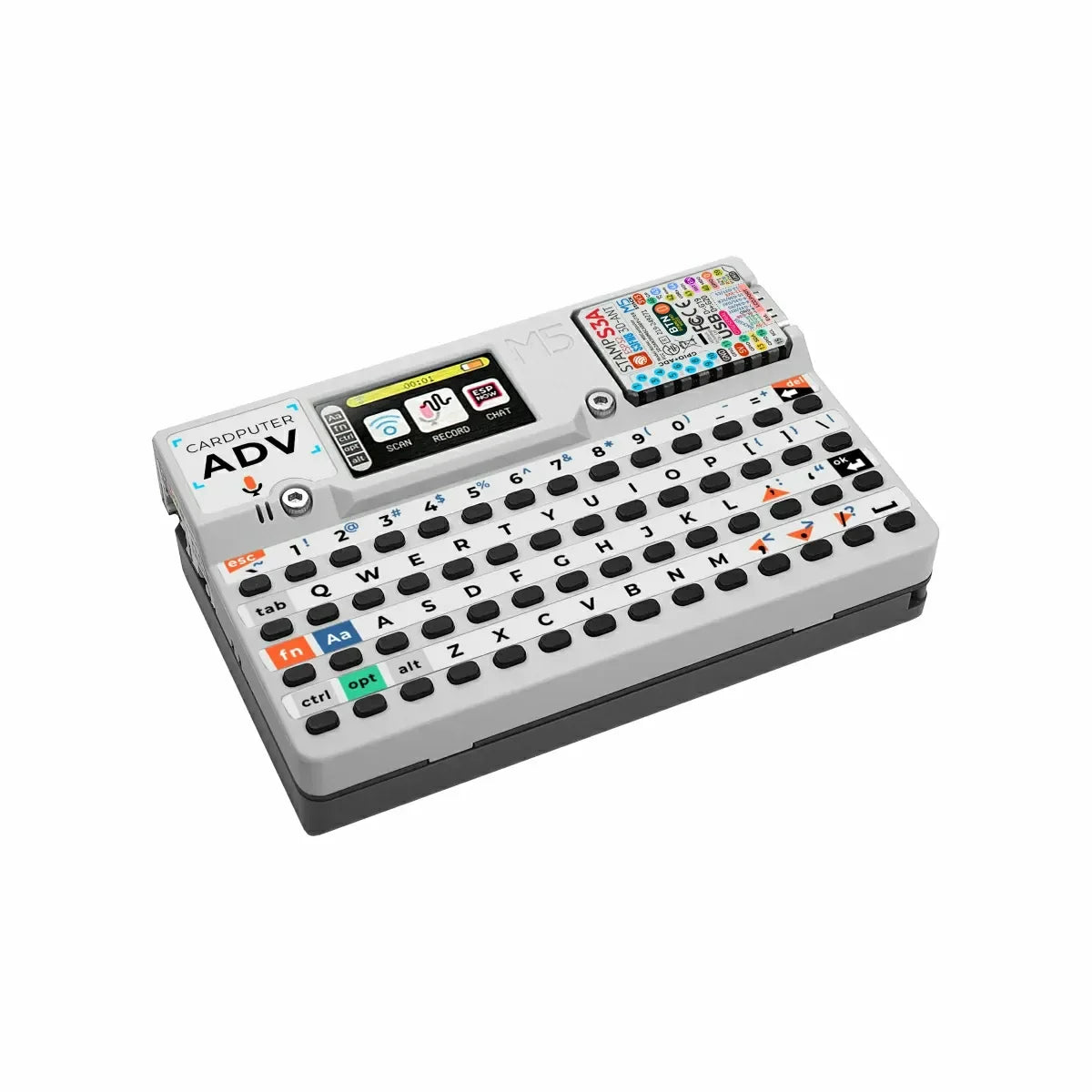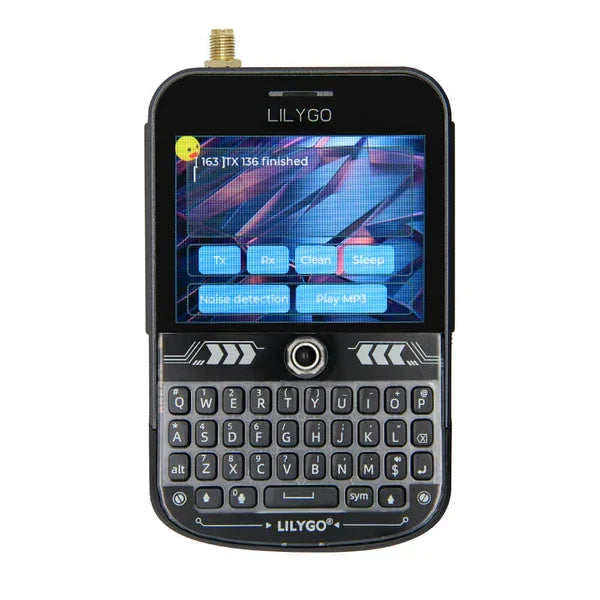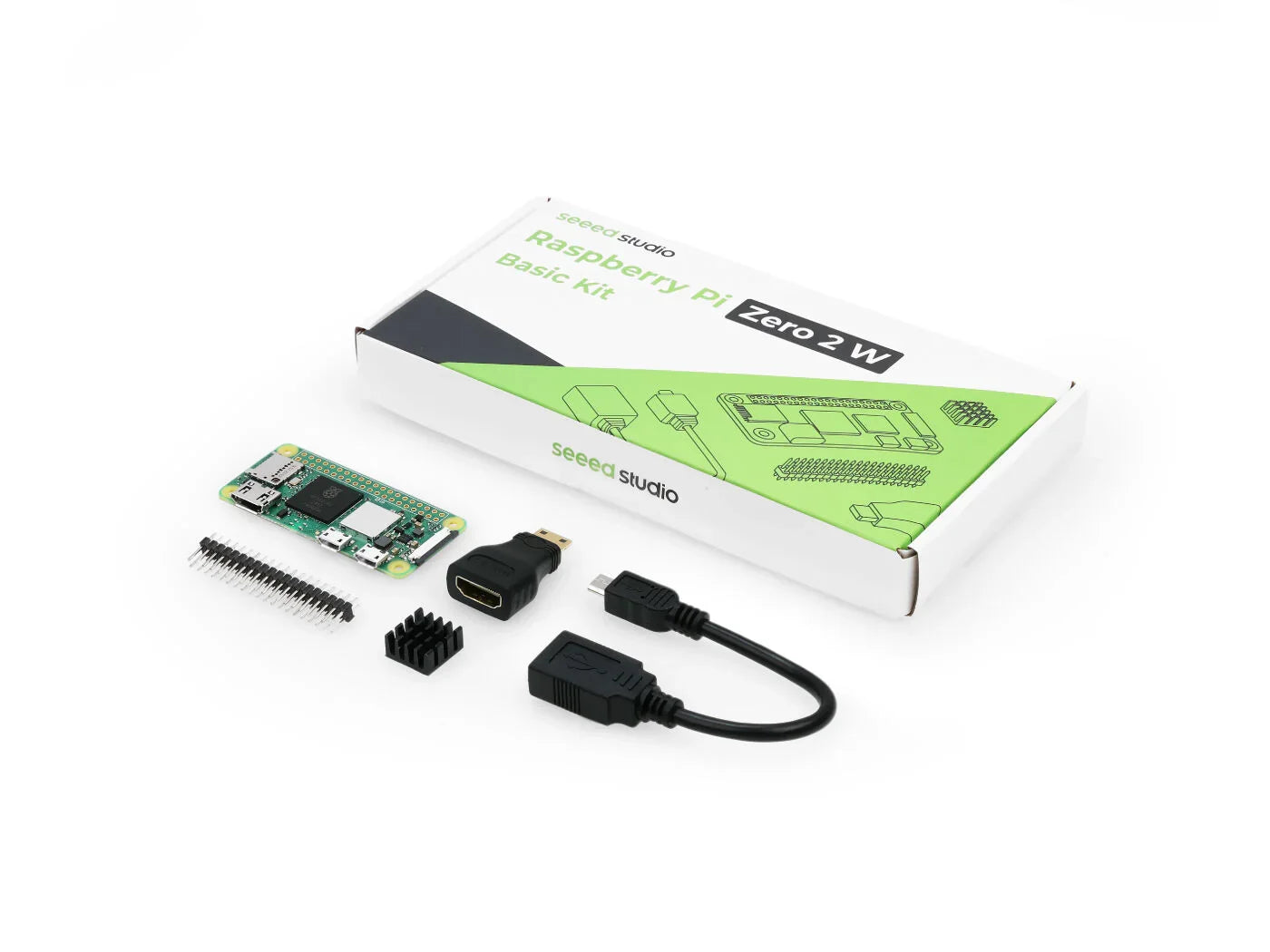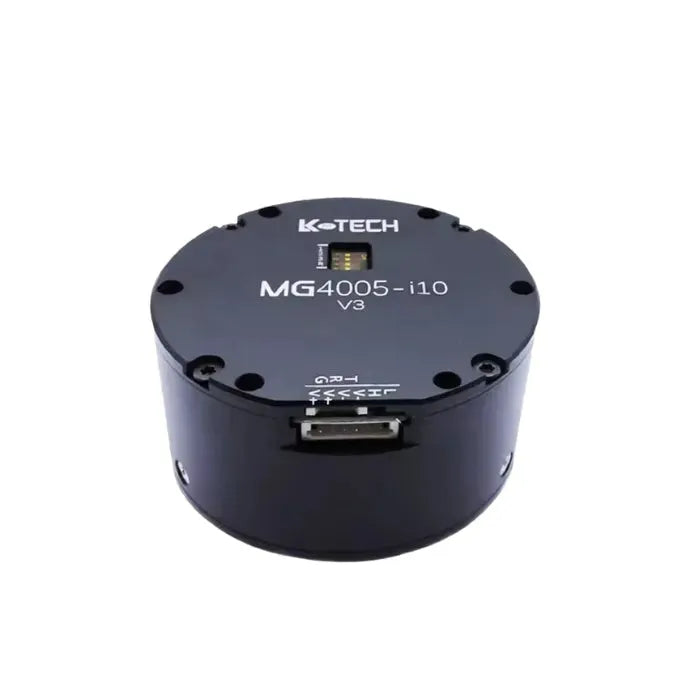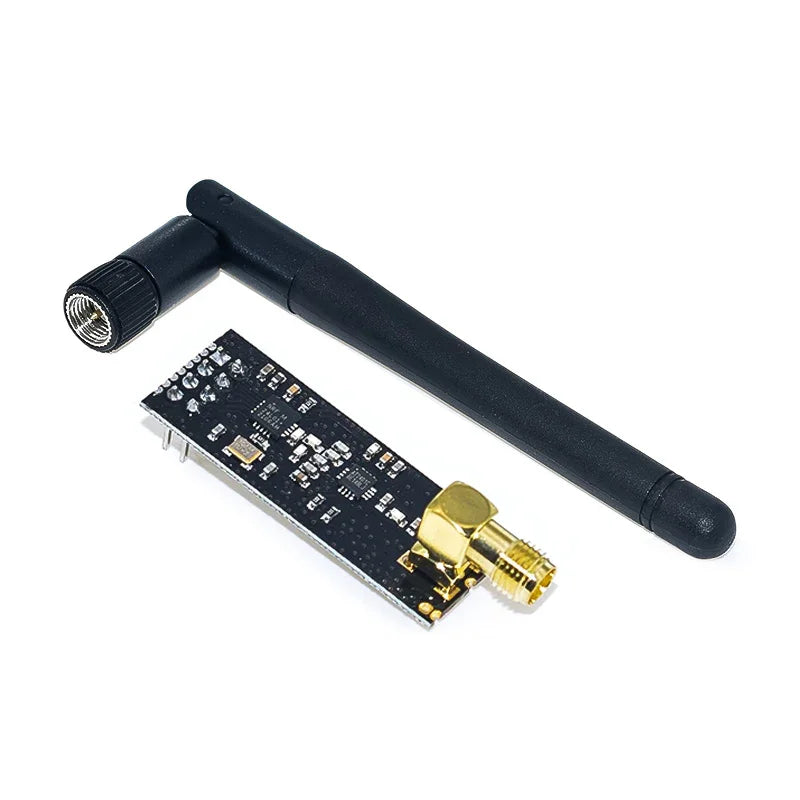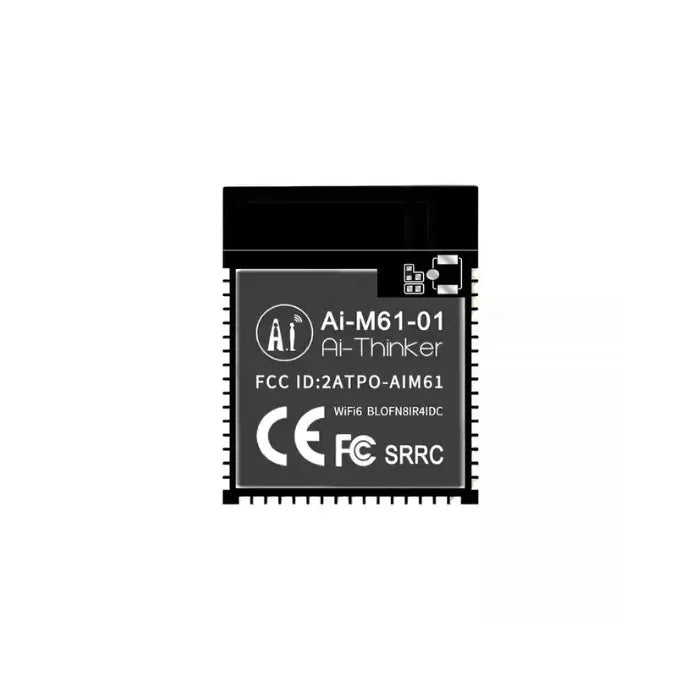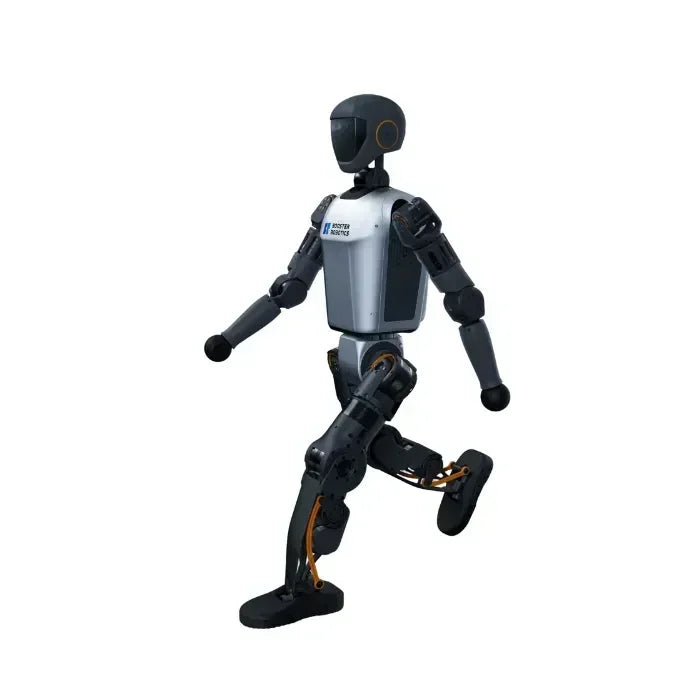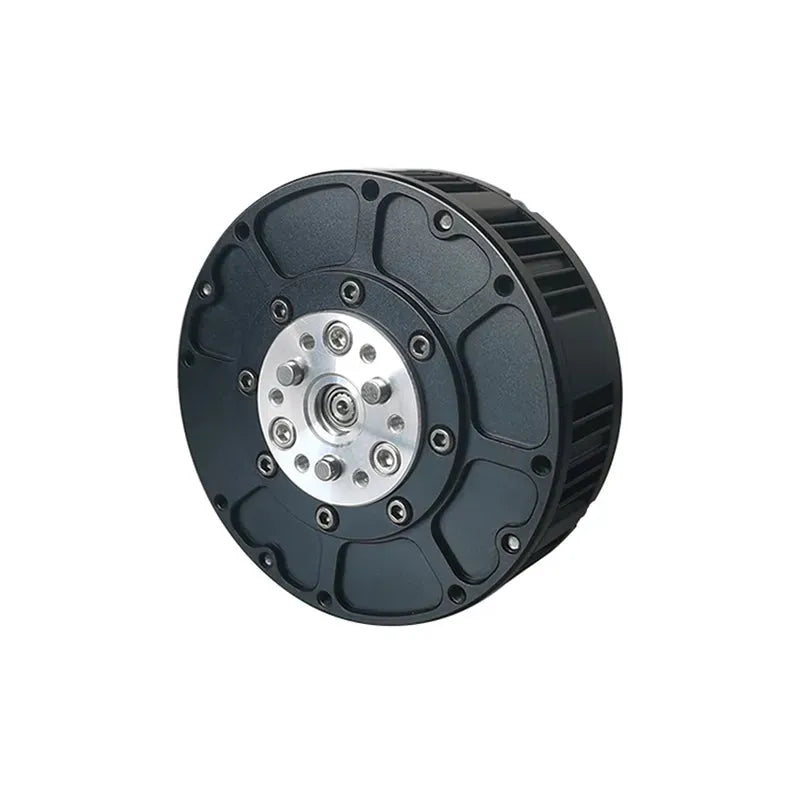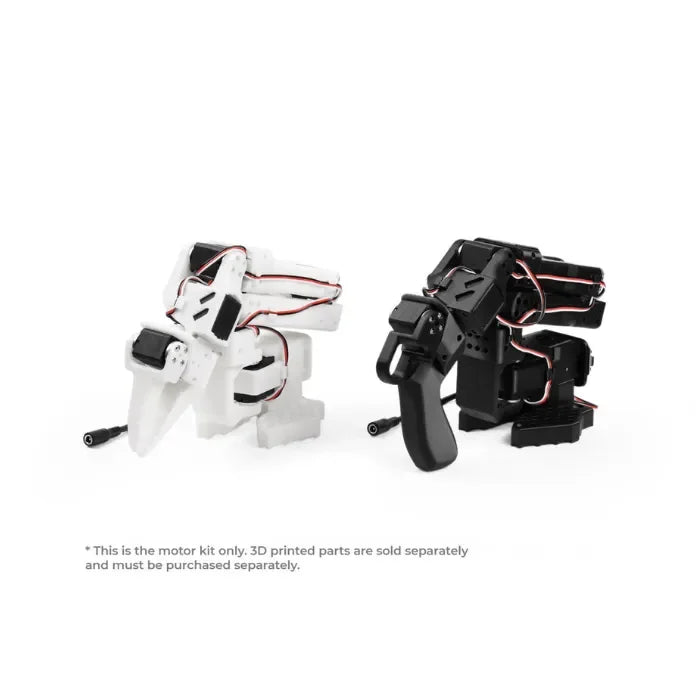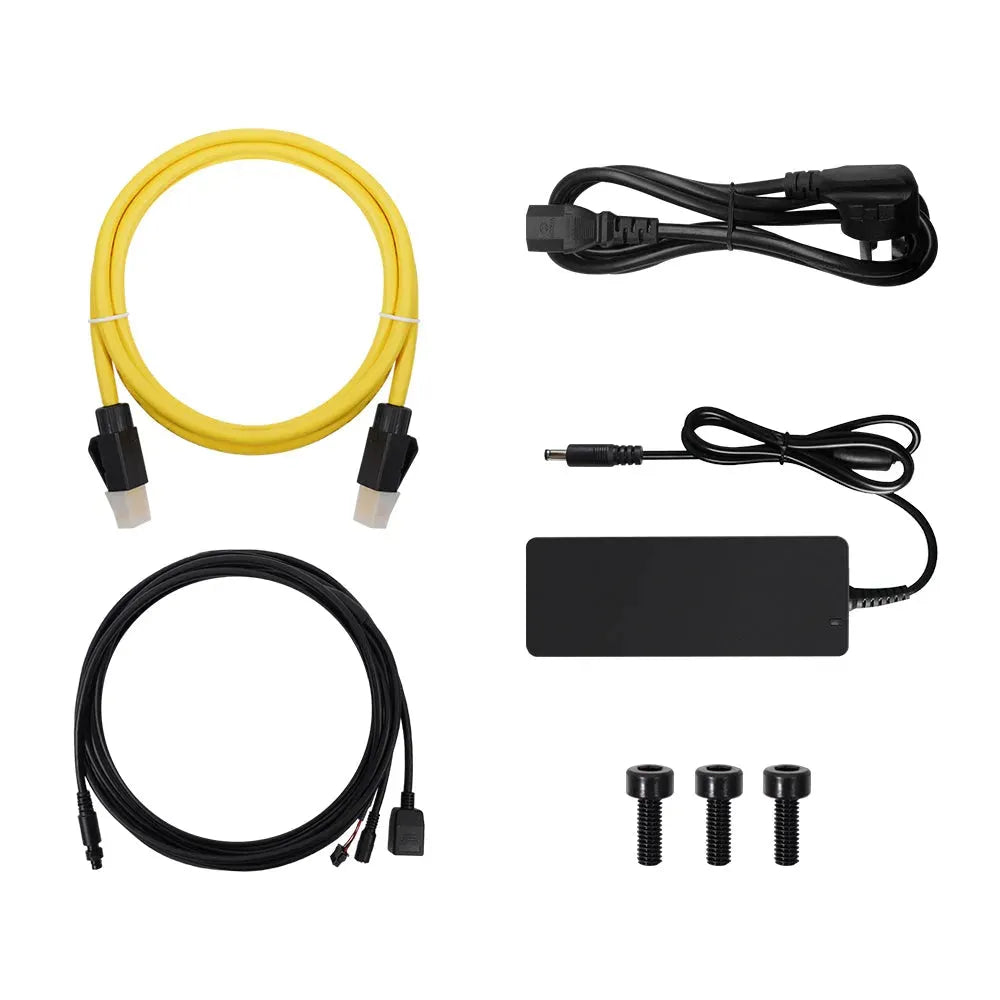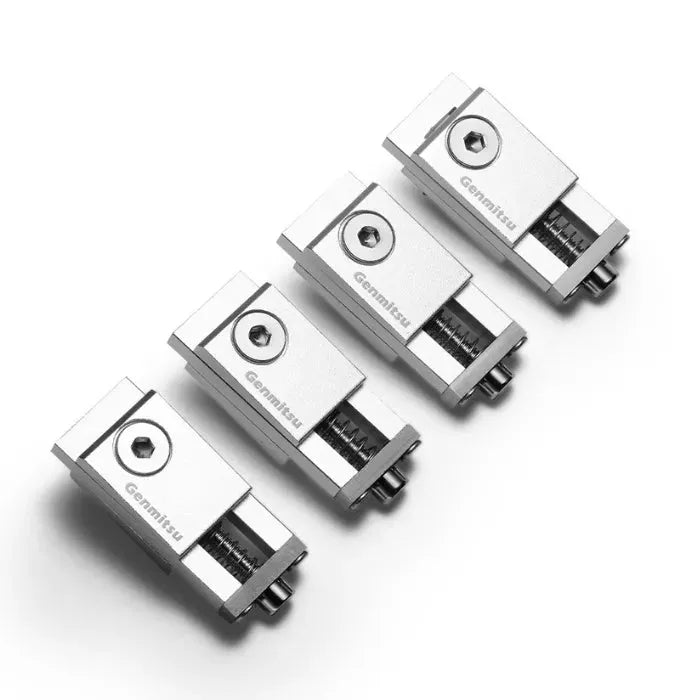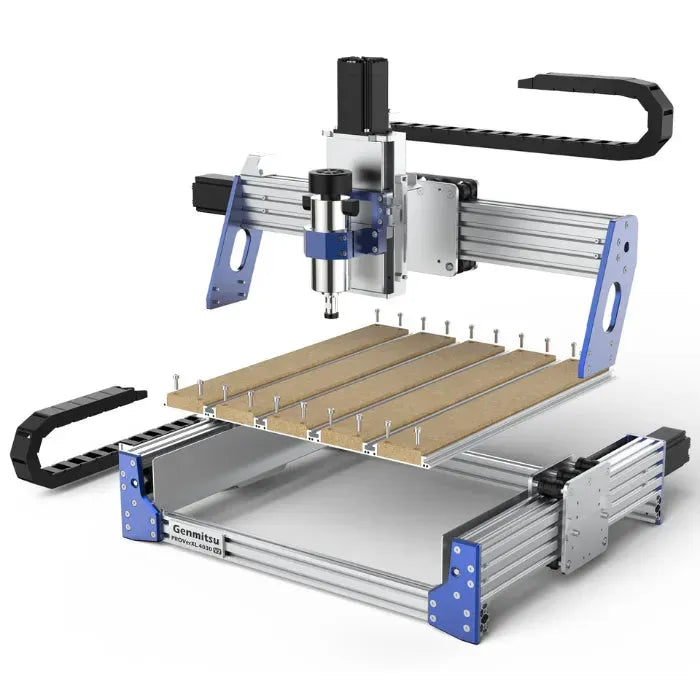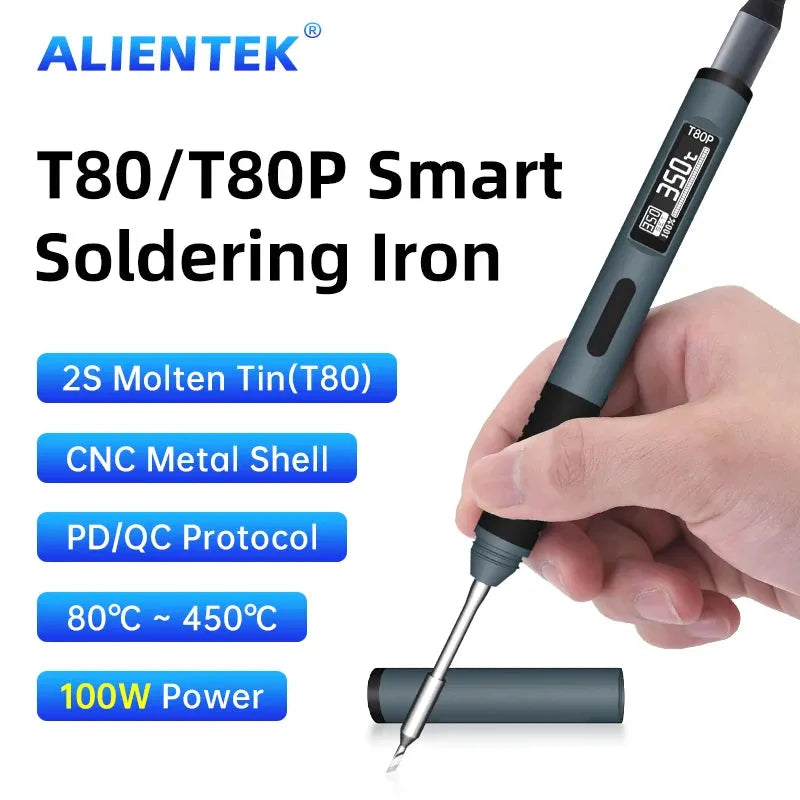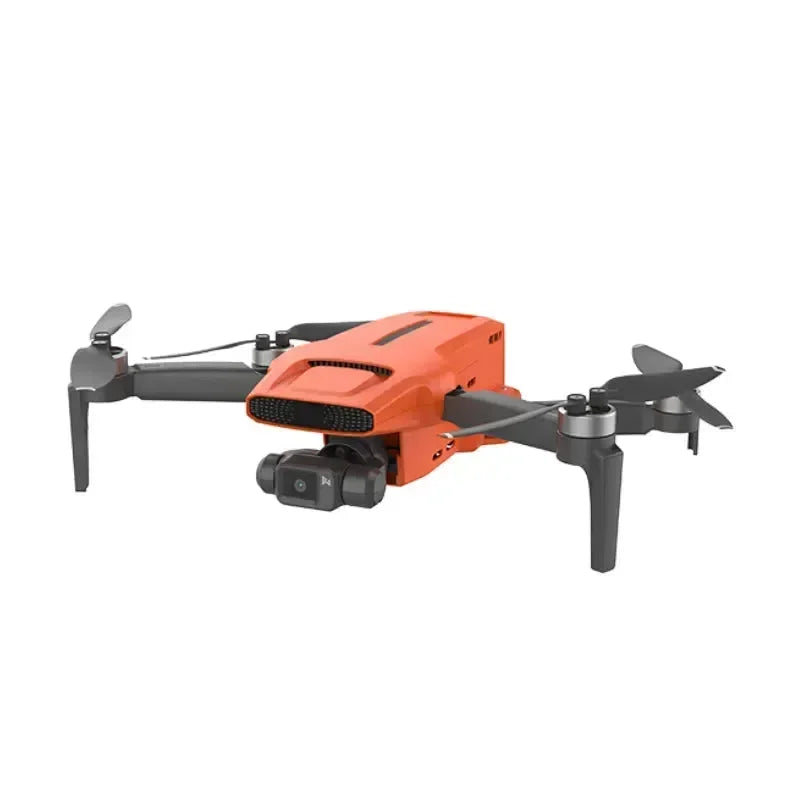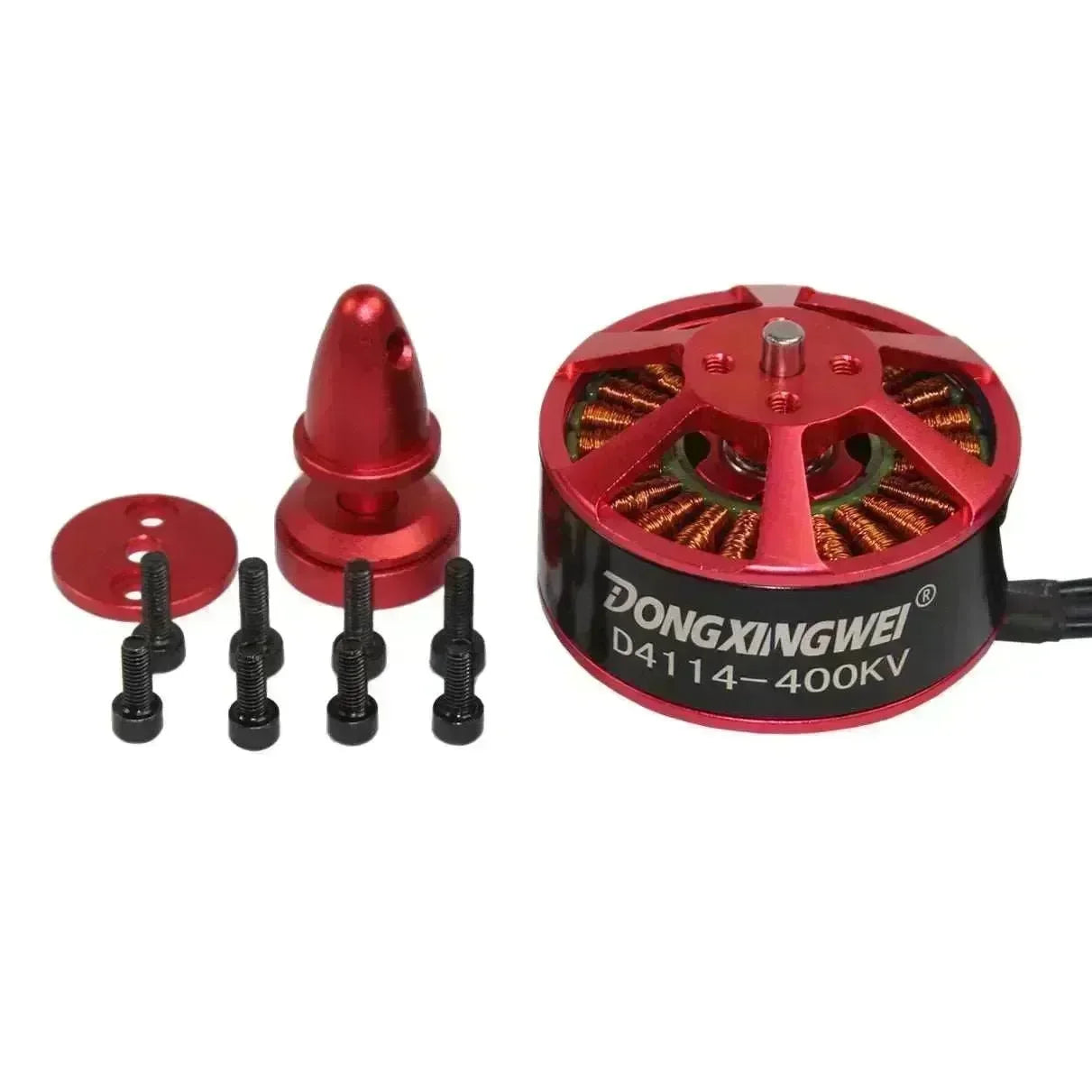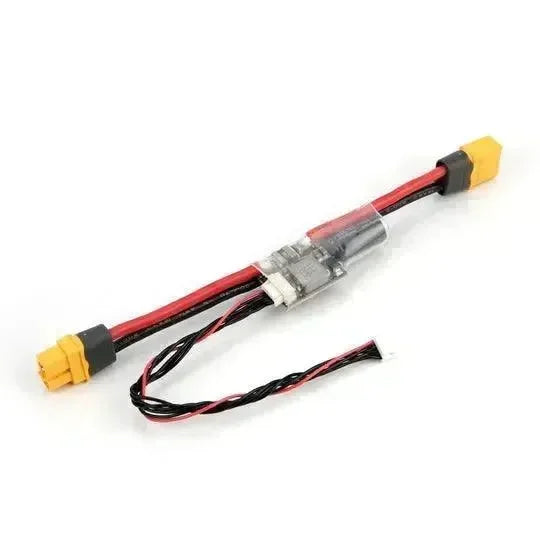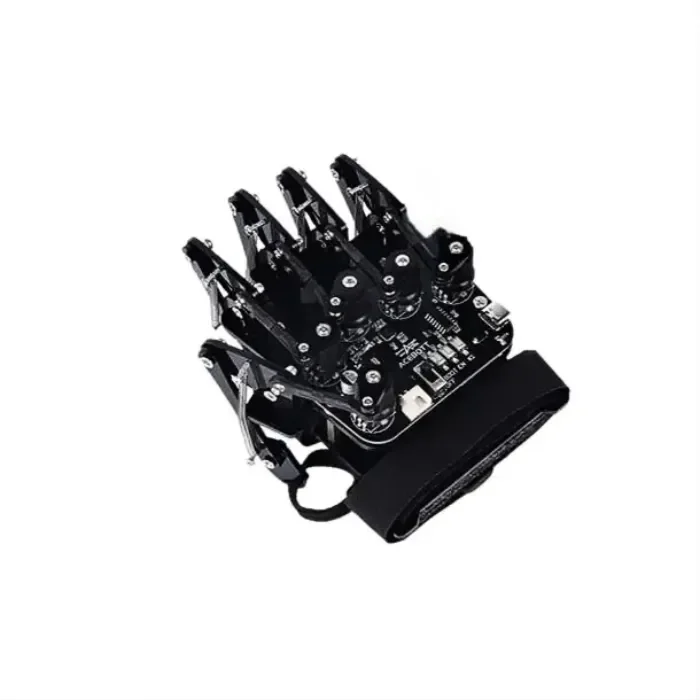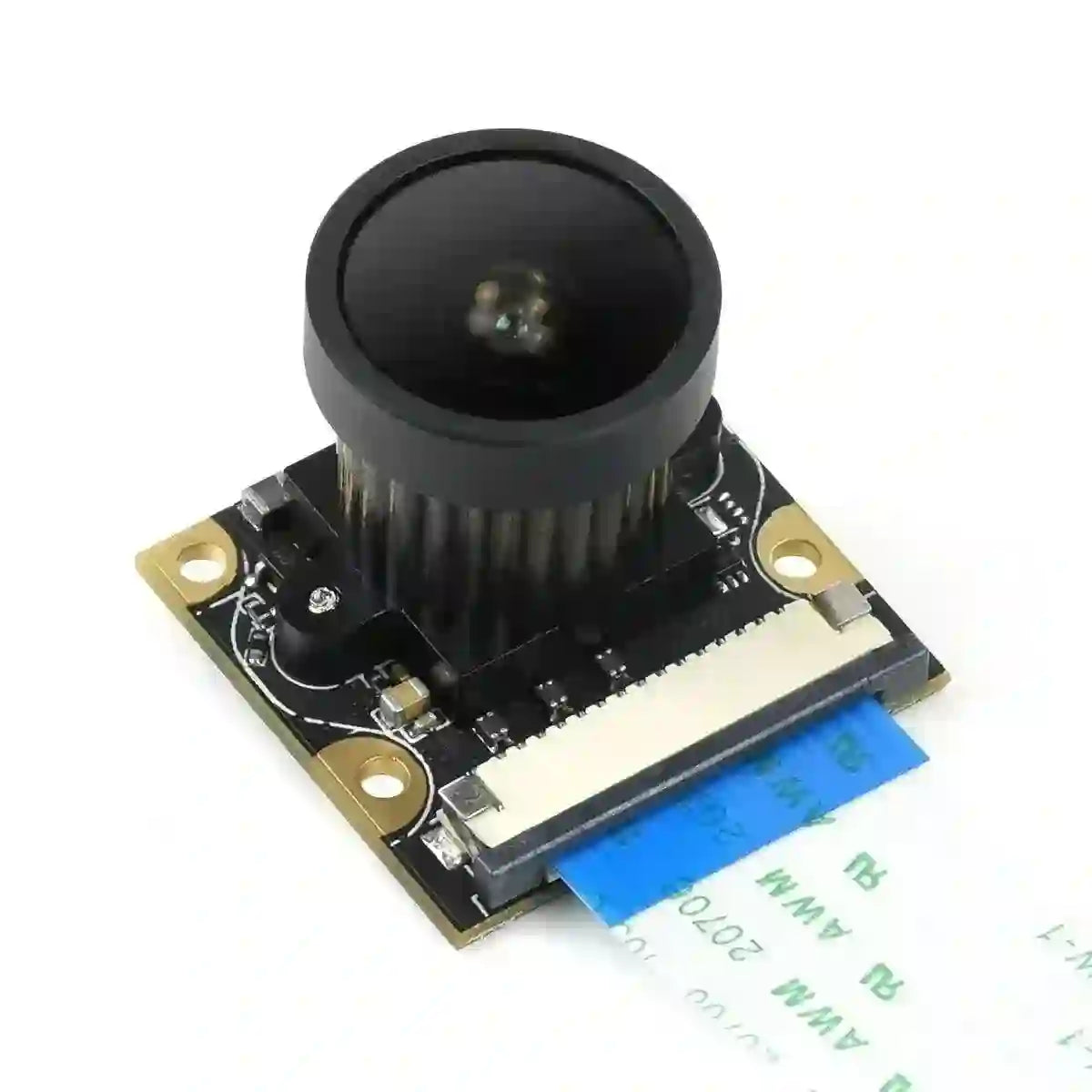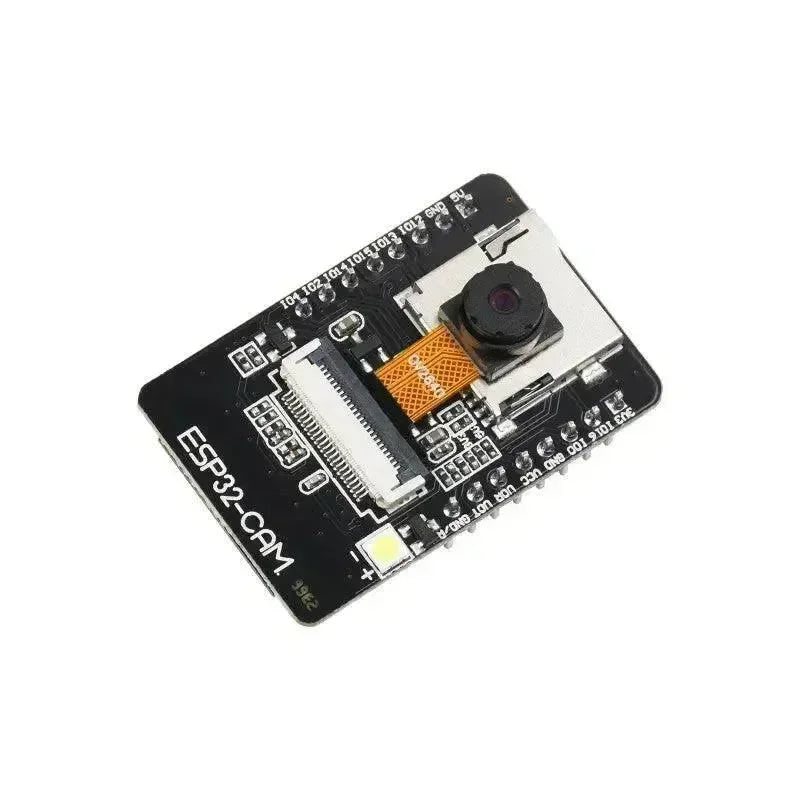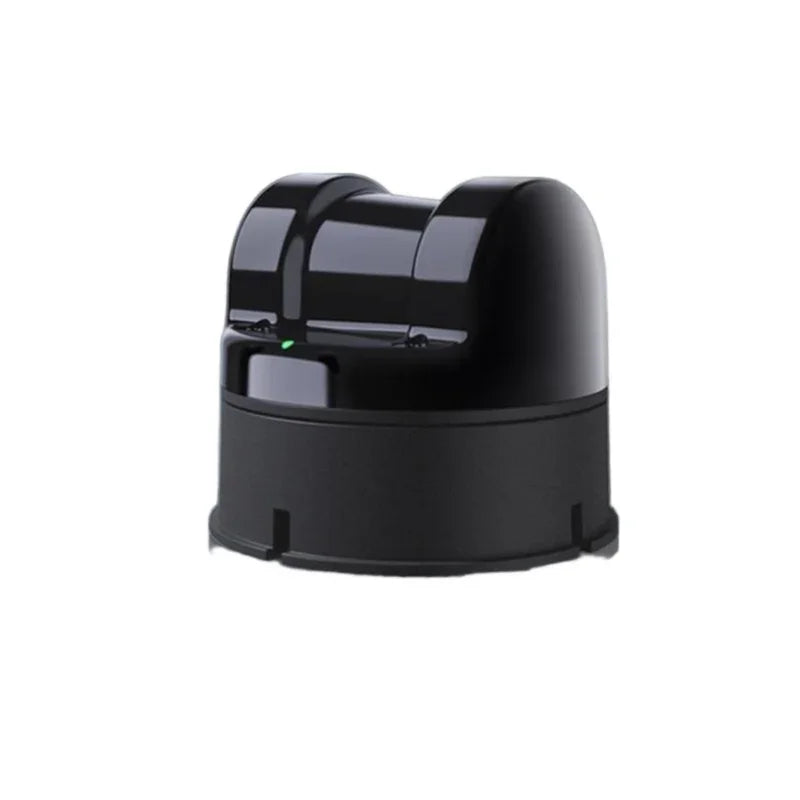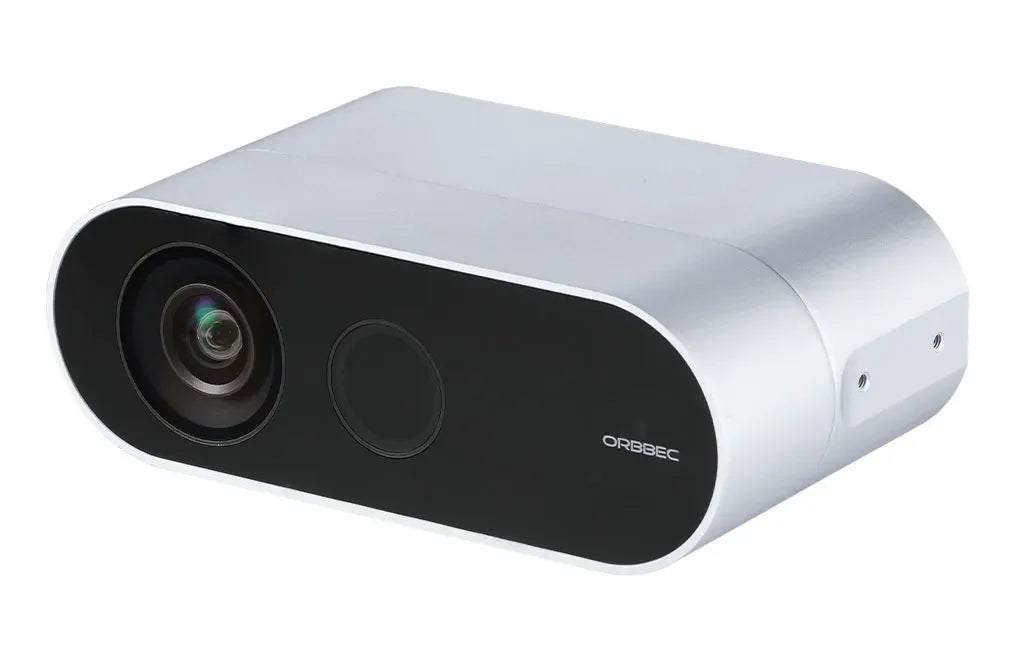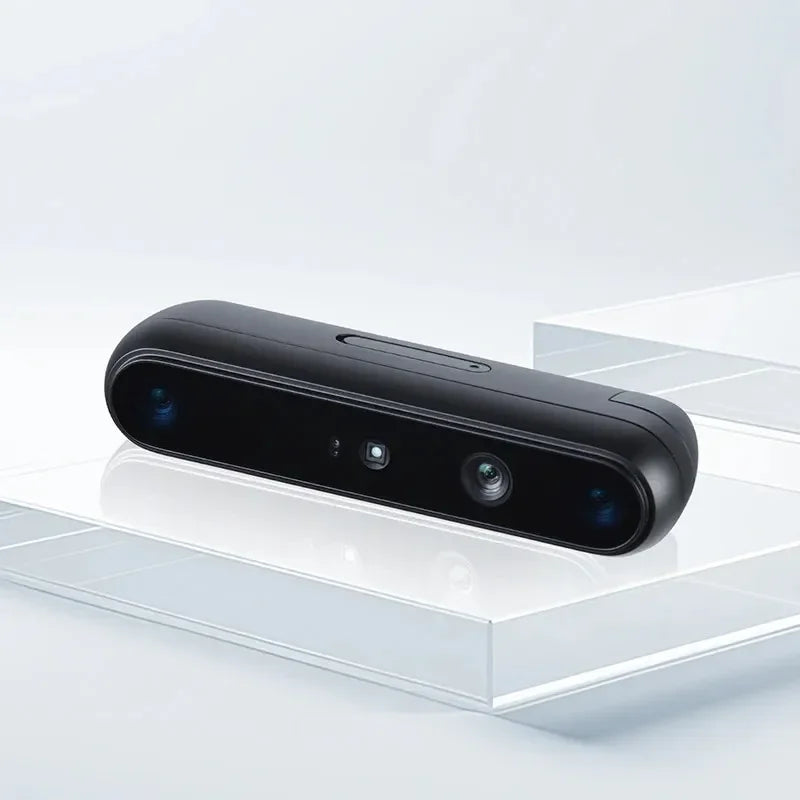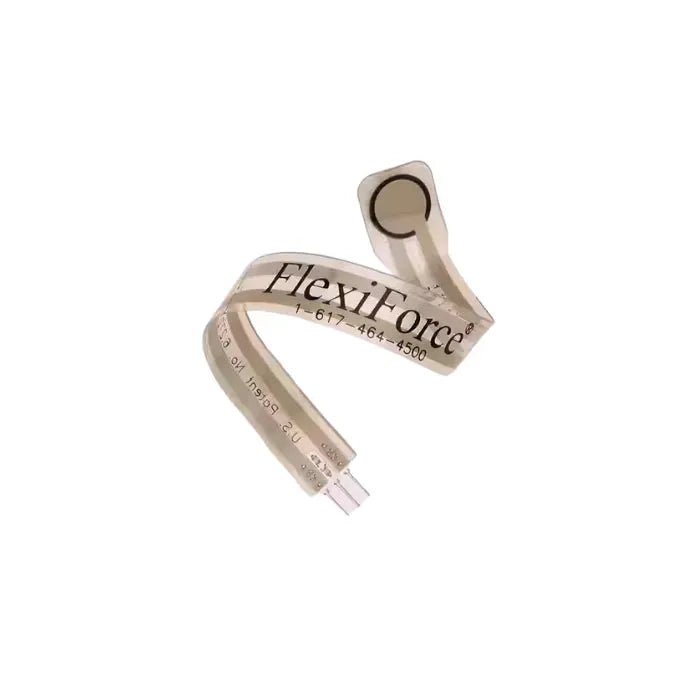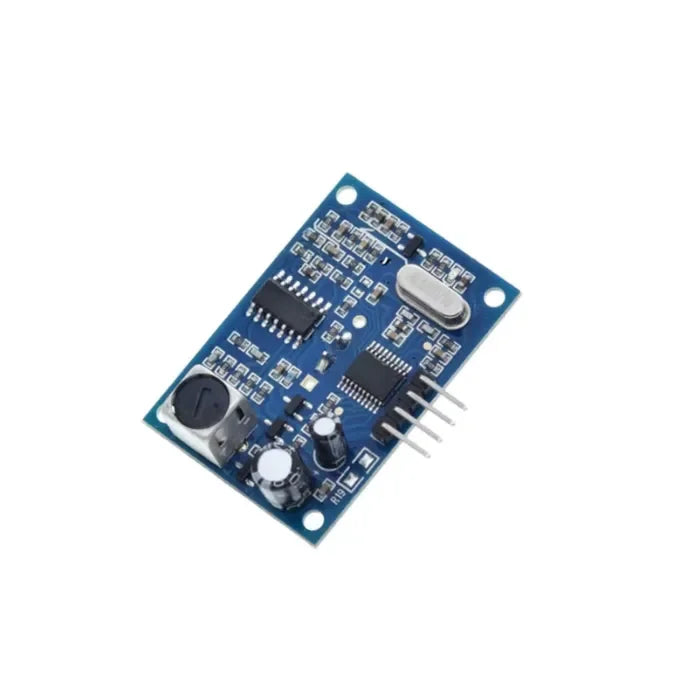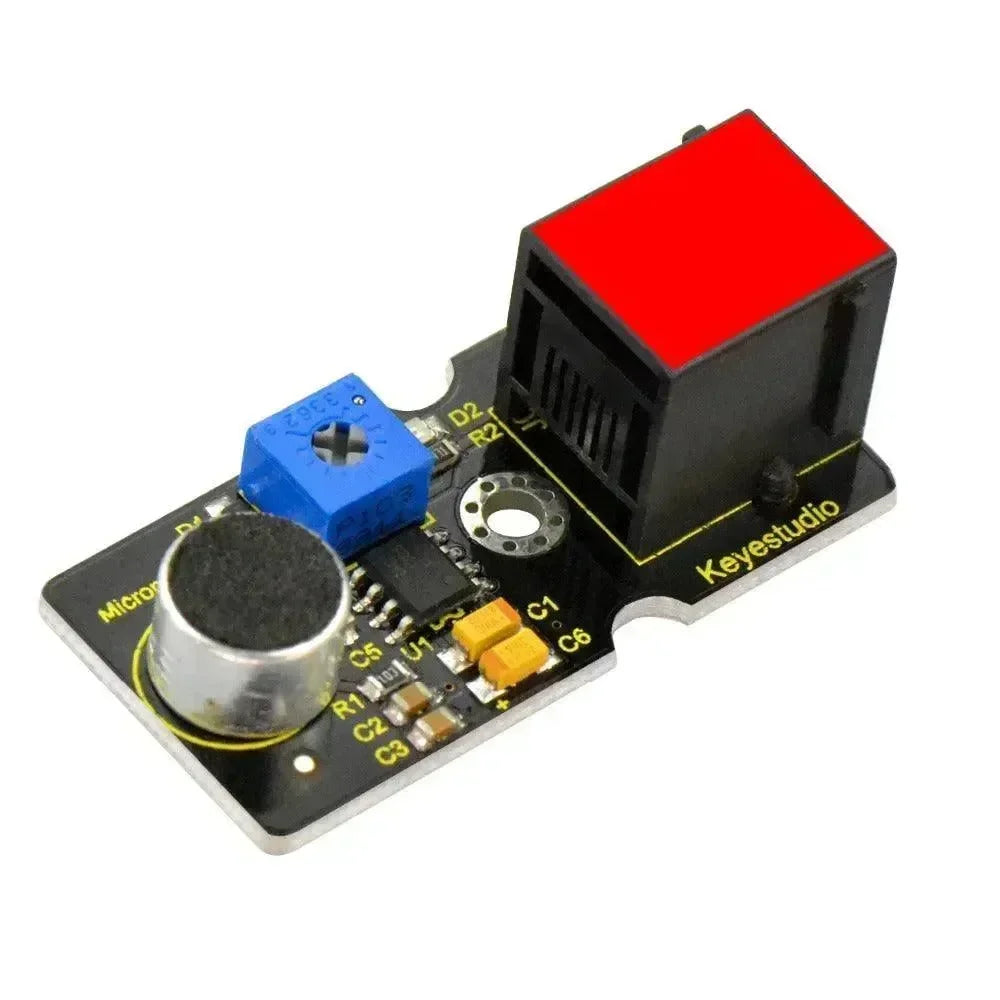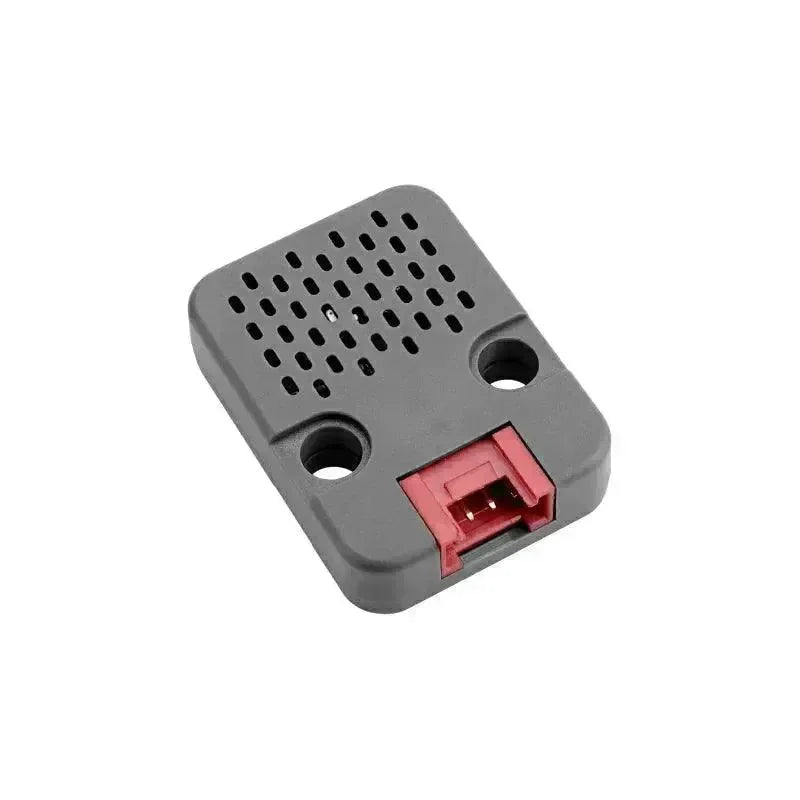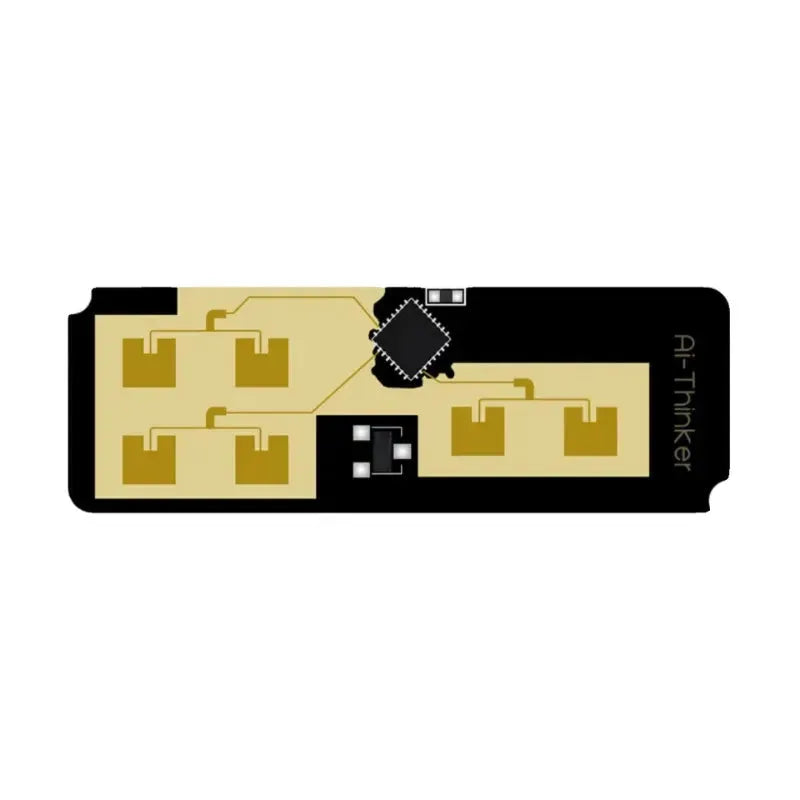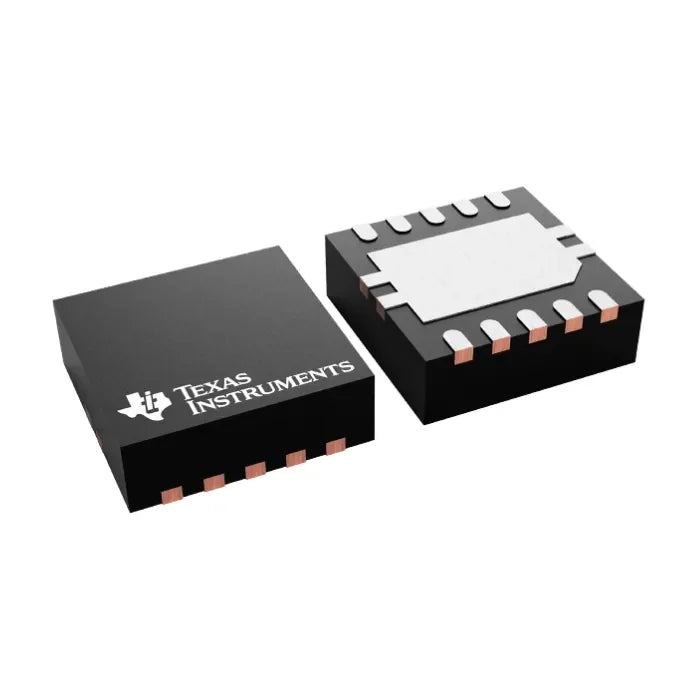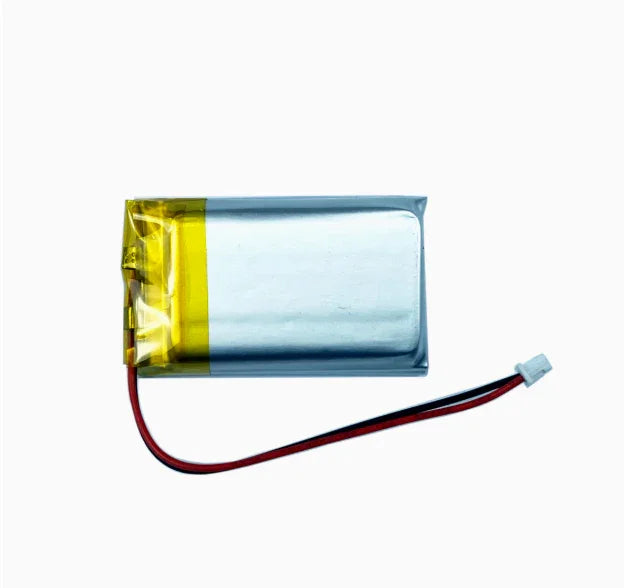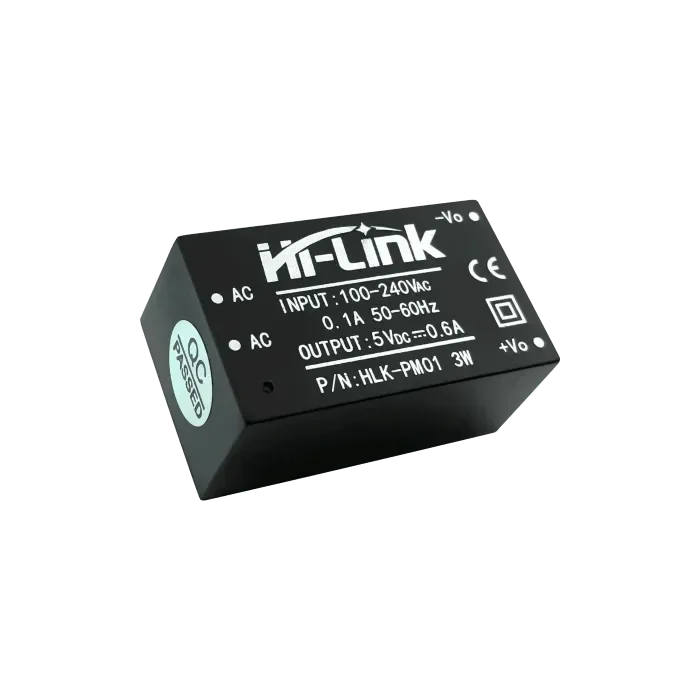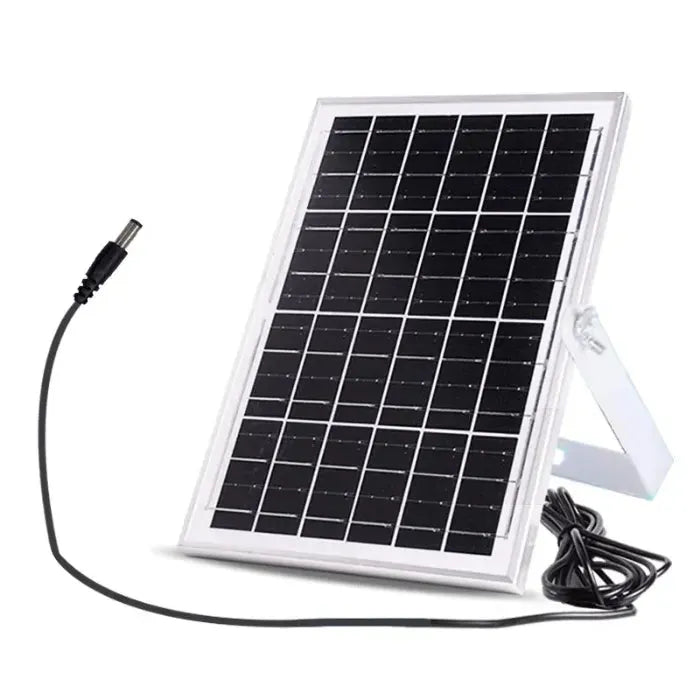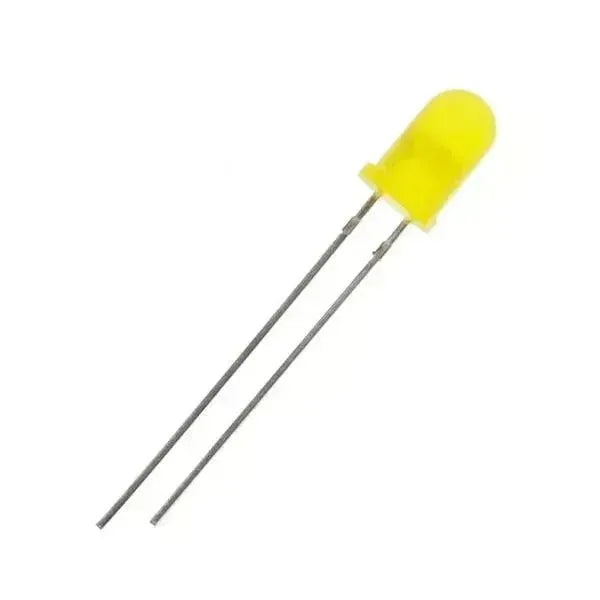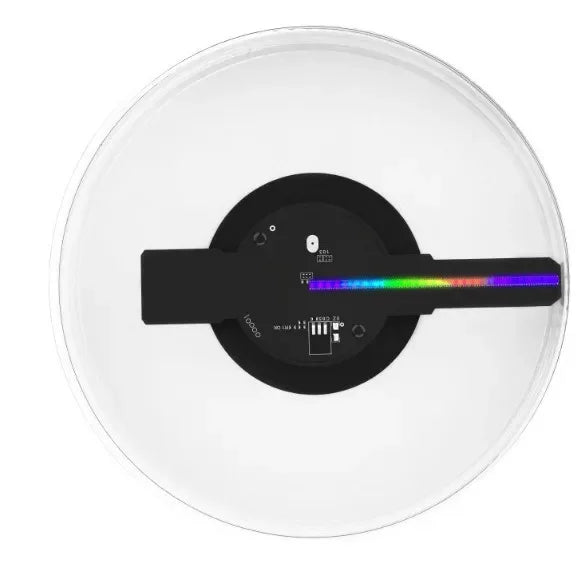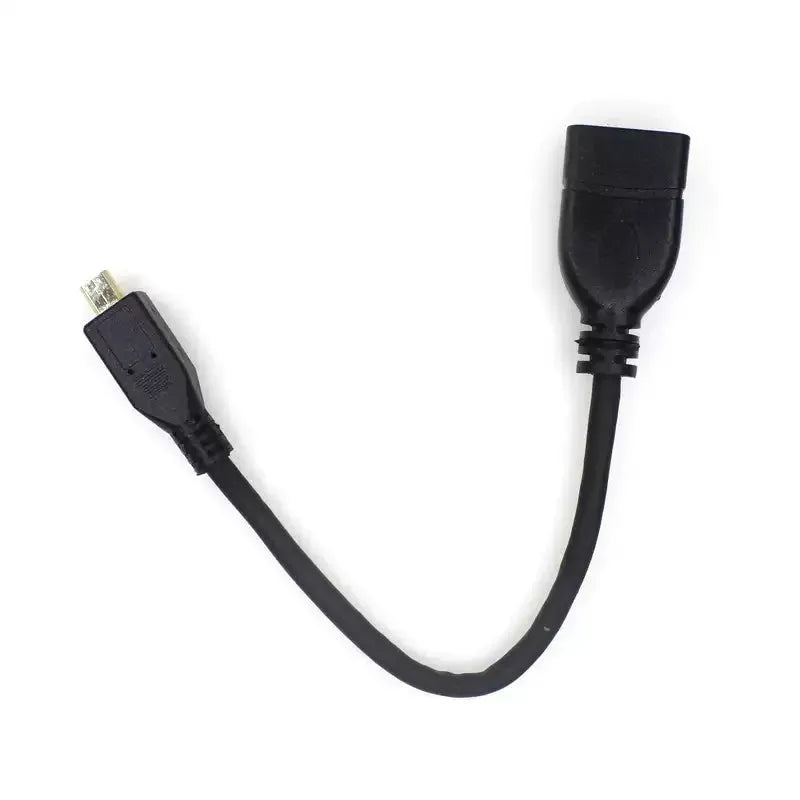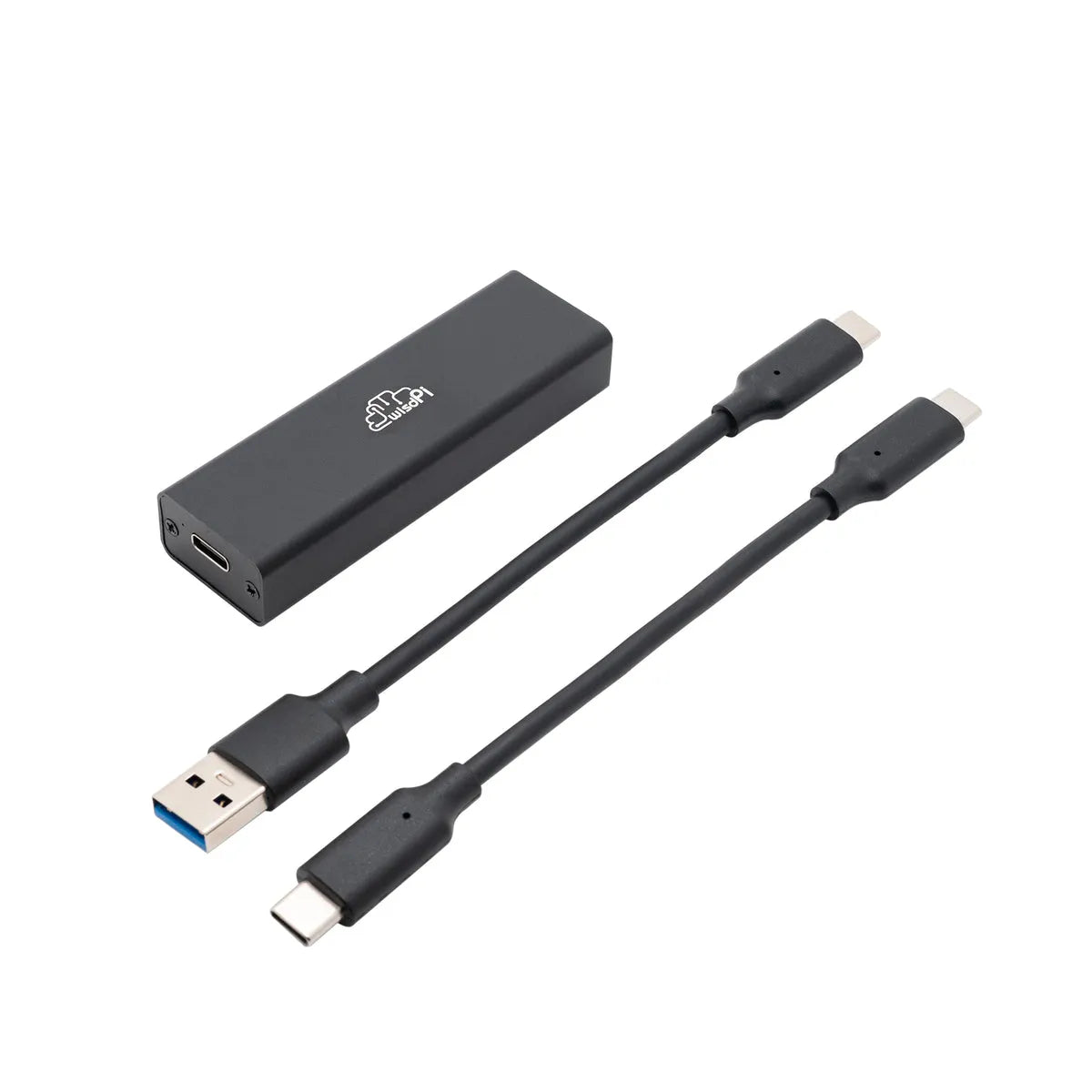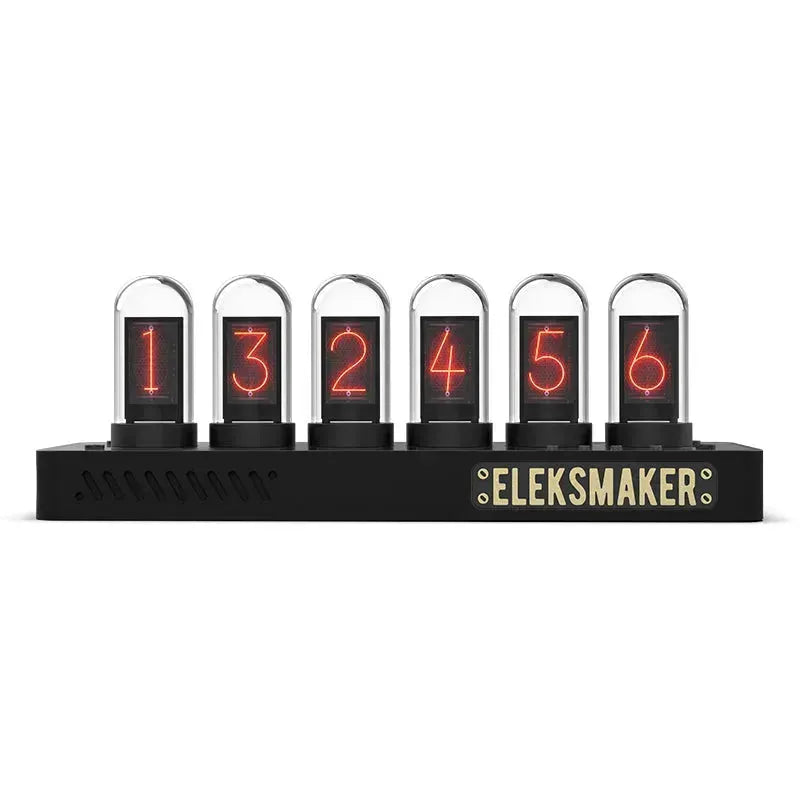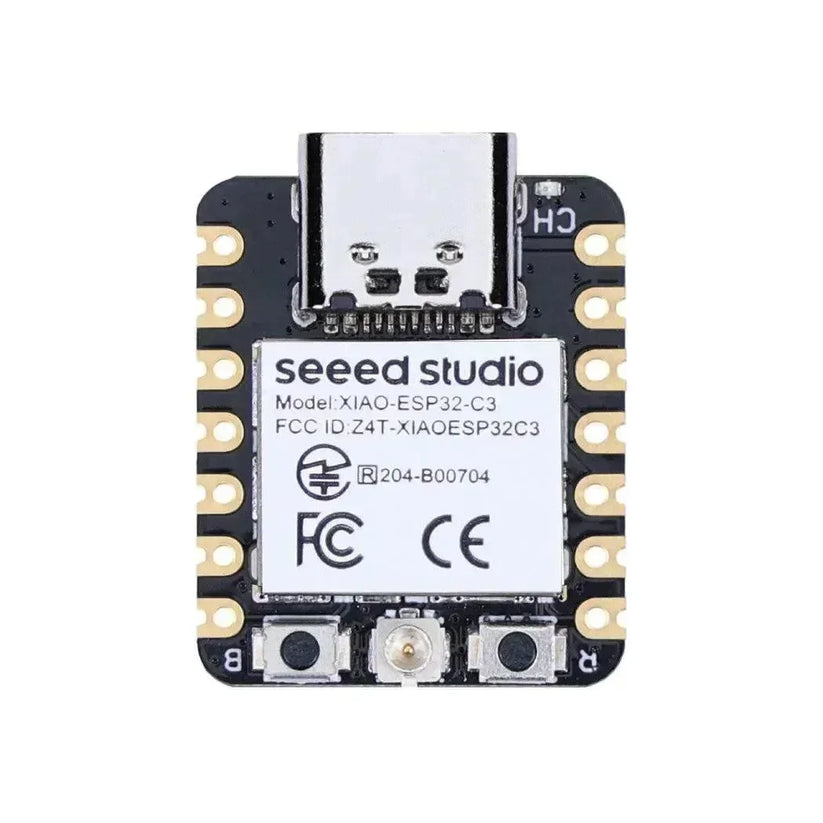Who is Seeed Studio?
Seeed Studio is a hardware innovation platform based in Shenzhen, China, dedicated to empowering makers, engineers, and enterprises to turn ideas into real-world products.
🔧 What They Do
-
Develop and manufacture open-source hardware
-
Provide IoT modules, edge computing devices, and smart sensors
-
Offer services like Fusion PCB, rapid prototyping, and global distribution
🌍 Global Reach & Community Since its founding in 2008 by Eric Pan, Seeed has built a strong reputation in the maker community, collaborating with developers, incubators, and tech ecosystems worldwide.
Their products are widely used in education, smart agriculture, environmental monitoring, and industrial automation.
🧩 Popular Product Lines
-
XIAO Series: Ultra-compact dev boards for wearables and embedded systems
-
SenseCAP: Environmental sensors and LoRaWAN devices
-
Grove Ecosystem: Modular plug-and-play sensors and actuators
💡 Open Source Commitment Seeed actively supports open-source development and provides extensive documentation, SDKs, and community forums to foster innovation.
Is Seeed Studio a Chinese Company?
Yes — Seeed Studio is a Chinese company headquartered in Shenzhen, Guangdong Province 🇨🇳. It was founded in 2008 by Eric Pan, and has grown into a global hardware innovation platform known for open-source electronics, IoT modules, and rapid prototyping services.
They’re especially well-known for product lines like the XIAO series, SenseCAP sensors, and the Grove ecosystem, which are widely used by makers, educators, and industrial developers around the world.
Want to explore how their Shenzhen roots influence their product design or supply chain? I’d be happy to dive deeper 🌏🔧
Is Seeed Studio open source?
Open source is deeply embedded in Seeed Studio’s DNA. Since its founding, Seeed has actively supported open-source hardware and software across its product lines and platforms.
🔓 Here’s how they embrace open source:
-
🛠️ Software Tools: Their graphical programming tool CodeCraft is fully open-sourced, making it easier for beginners to build projects without writing traditional code.
-
📦 3D Models & Enclosures: Seeed shares mechanical designs on platforms like GrabCAD and Thingiverse, allowing makers to download and remix enclosures and accessories.
-
🌍 Community Contributions: They run a contributor program that encourages developers to co-build solutions, submit pull requests, and improve documentation.
-
Where is Seeed Studio based?
Seeed Studio is based in Shenzhen, Guangdong Province, China 🇨🇳 — right in the heart of one of the world’s most dynamic hardware manufacturing hubs. Their headquarters are located in the TCL International E City tech park in Nanshan District, which is home to many leading tech innovators.
This strategic location gives Seeed direct access to Shenzhen’s vast supply chain, rapid prototyping resources, and maker community — all of which fuel their open-source hardware and IoT product development.
What is Seeed Studio XIAO?
The Seeed Studio XIAO series is a family of ultra-compact, high-performance microcontroller boards designed for makers, developers, and embedded system enthusiasts. Think of them as thumb-sized powerhouses — perfect for space-constrained projects that still demand serious computing and connectivity.
Seeed Studio XIAO Series
Seeed Studio XIAO ESP32-S3
Seeed Studio XIAO ESP32-S3 is a thumb-sized, high-performance development board designed for IoT, wearables, smart homes, and robotics. It’s part of the XIAO series, known for combining compact form factors with powerful capabilities.
🧠 Core Specs & Features
-
Processor: Dual-core Xtensa LX7 32-bit CPU, running up to 240 MHz
-
Wireless: Supports 2.4GHz Wi-Fi and Bluetooth 5.0 (BLE + Mesh)
-
Memory: On-chip 8MB PSRAM + 8MB Flash
-
Power Efficiency: Deep sleep mode consumes as little as 14μA
-
Battery Support: Built-in lithium battery charging management
-
Form Factor: Just 21 × 17.8 mm, perfect for space-constrained projects
-
Interfaces:
-
1× UART, 1× I2C, 1× SPI, 1× IIS
-
11× GPIO (PWM), 9× ADC
-
Reset & Boot buttons
-
U.FL antenna connector for extended range
-
🎯 Why It Stands Out
-
Production-Ready: Surface-mount design with no backside components
-
Breadboard-Friendly: Easy prototyping with standard pin headers
-
Open Source: Fully documented with schematics, libraries, and firmware on GitHub
-
Fusion PCBA Support: Seamless transition from prototype to mass production
🔧 Use Cases
-
Smart home automation 🏠
-
Wearable health monitors ⌚
-
Edge AI and TinyML 🤖
-
Robotics and sensor networks 🔩
-
Educational kits and rapid prototyping 📚
Seeed Studio XIAO ESP32-S3 Sense
Seeed Studio XIAO ESP32-S3 Sense is a compact, feature-rich development board designed for AI-powered IoT applications, especially those involving vision and voice recognition. It builds on the XIAO ESP32-S3 platform by integrating key sensory components for edge intelligence.
🎥 Sense-Specific Features
-
📷 OV2640 Camera Sensor: 1600×1200 resolution, detachable
-
🎙️ Digital Microphone: For voice input and audio sensing
-
💾 SD Card Slot: Supports up to 32GB FAT for external storage
-
📡 U.FL Antenna Connector: Enables long-range wireless communication (100m+)
📐 Form Factor & Interfaces
-
Size: 21 × 17.8 × 15 mm (with expansion board)
-
Interfaces:
-
1× UART, 1× I2C, 1× SPI, 1× IIS
-
11× GPIO (PWM), 9× ADC
-
Reset & Boot buttons
-
B2B connector for expansion
-
Seeed Studio XIAO ESP32-C6
Seeed Studio XIAO ESP32-C6 is a compact, next-gen development board designed for Matter-compliant smart home, IoT, and low-power wireless applications. It’s part of the XIAO series, known for packing serious capabilities into a thumb-sized footprint.
🧠 Core Specs & Architecture
-
Processor: Dual-core 32-bit RISC-V
-
High-performance core @ 160 MHz
-
Low-power core @ 20 MHz
-
-
Memory: 512KB SRAM + 4MB Flash
-
Security: Supports secure boot, flash encryption, and Trusted Execution Environment (TEE) 🔐
📡 Wireless Connectivity
-
Wi-Fi 6 (802.11ax) @ 2.4GHz
-
Bluetooth 5.3 (LE + Mesh)
-
Zigbee & Thread via IEEE 802.15.4
-
Native support for Matter protocol, enabling seamless smart home interoperability2
🔋 Power & Efficiency
-
Deep sleep current: ~15μA
-
Supports lithium battery charging via USB-C
-
Multiple sleep modes for energy-sensitive designs
📐 Form Factor & Interfaces
-
Size: 21 × 17.8 mm — classic XIAO footprint
-
Interfaces:
-
1× UART, 1× LP_UART
-
1× I2C, 1× LP_I2C, 1× SPI
-
11× GPIO (PWM), 7× ADC, 1× SDIO 2.0 Slave
-
Reset & Boot buttons, U.FL antenna connector
-
🎯 Ideal Use Cases
-
Smart home automation 🏠
-
Matter-compliant devices 🧠
-
Wearables & sensor networks ⌚
-
Robotics & edge computing 🤖
-
Educational kits & rapid prototyping 📚
Seeed Studio XIAO RP2040
Seeed Studio XIAO RP2040 is a tiny yet powerful development board built around the Raspberry Pi RP2040 microcontroller, designed for makers, educators, and embedded system developers who need performance in a compact form factor.
🧠 Core Specs & Architecture
-
Processor: Dual-core ARM Cortex-M0+, up to 133 MHz
-
Memory: 264KB SRAM + 2MB Flash
-
Form Factor: Just 21 × 17.8 mm — smaller than a thumb!
-
Power Supply: Supports 3.3V/5V DC via USB Type-C or VIN pin
🔌 Interfaces & I/O
-
14 GPIOs total:
-
11 digital pins (PWM capable)
-
4 analog pins (ADC)
-
-
Communication:
-
1× UART
-
1× I2C
-
1× SPI
-
1× SWD bonding pad for debugging
-
-
LEDs & Buttons:
-
User-programmable RGB LED
-
Power LED
-
Reset & Boot buttons
-
🧩 Software Compatibility
-
Supports Arduino, MicroPython, and CircuitPython
-
Breadboard-friendly and SMD-ready for production use
-
Fully documented with open-source schematics and libraries
🎯 Ideal Use Cases
-
Wearable tech ⌚
-
Smart sensors & IoT nodes 🌐
-
STEM education & coding kits 📚
-
Robotics & automation 🤖
-
TinyML & edge computing 🧠
Seeed Studio XIAO RP2350
Seeed Studio XIAO RP2350 is a compact, high-performance microcontroller board designed for IoT, wearables, and embedded systems — all in the classic thumb-sized XIAO form factor.
🧠 Core Architecture
-
Powered by the Raspberry Pi RP2350 chip
-
Features dual-core Arm Cortex-M33 @150MHz with FPU
-
Includes 520KB SRAM and 2MB Flash
-
Built-in secure boot and encrypted bootloader for enhanced security 🔐
📐 Form Factor & Interfaces
-
Size: 21 × 17.8 mm — ultra-compact and breadboard-friendly
-
19 multifunction GPIOs: Analog, Digital, PWM, I²C, UART, SPI
-
RGB LED, charge LED, and battery management system
-
Supports direct battery voltage measurement
-
Surface-mount design with all components on the front — ideal for mass production
🔋 Power Efficiency
-
Ultra-low sleep current: ~27μA
-
Supports lithium battery charging and power monitoring
🧩 Software Compatibility
-
Native support for MicroPython, C/C++, Arduino, and PlatformIO
-
Works seamlessly with the XIAO ecosystem — Grove modules, LED matrices, mmWave sensors, and more
🎯 Use Cases
-
Smart control systems 🧠
-
Wearable tech ⌚
-
DIY keyboards ⌨️
-
Battery-powered IoT nodes 🌐
-
Educational kits & rapid prototyping 📚
Seeed Studio XIAO nRF52840
Seeed Studio XIAO nRF52840 is a compact, ultra-low-power microcontroller board designed for Bluetooth 5.0 and IoT applications, especially in wearables, smart sensors, and TinyML projects.
🧠 Core Specs
-
MCU: Nordic nRF52840, 32-bit ARM Cortex-M4 with FPU @ 64 MHz
-
Memory: 256KB RAM + 1MB Flash (plus 2MB onboard flash)
-
Wireless: Bluetooth 5.0, BLE, and NFC with onboard antenna
-
Power Efficiency: Standby current < 5μA
-
Battery Support: Integrated charging/discharge chip for lithium batteries
🔌 Interfaces & I/O
-
11× GPIO (PWM)
-
6× ADC
-
1× UART, 1× I2C, 1× SPI, 1× NFC, 1× SWD
-
Reset button, 3-in-1 user LED, and charge LED
📐 Form Factor
-
Size: 21 × 17.8 mm — classic XIAO footprint
-
Single-sided SMT design for easy integration
-
Compatible with Arduino, MicroPython, and CircuitPython
🎯 Use Cases
-
Wearable health monitors ⌚
-
Smart home automation 🏠
-
Gesture recognition & TinyML 🤖
-
BLE-enabled sensor networks 🌐
-
Educational kits & rapid prototyping 📚
Seeed Studio XIAO nRF52840 Sense
Seeed Studio XIAO nRF52840 Sense is a tiny yet powerful development board tailored for Bluetooth 5.0, low-power IoT, and embedded AI applications — especially those involving gesture recognition and audio sensing.
🧠 Core Specs & Architecture
-
MCU: Nordic nRF52840, 32-bit ARM Cortex-M4 with FPU @ 64 MHz
-
Memory: 256KB RAM, 1MB Flash, plus 2MB onboard flash
-
Wireless: Bluetooth 5.0, BLE, and NFC with onboard antenna
-
Power Efficiency: Standby current < 5μA
-
Battery Support: Integrated charging/discharge chip for lithium batteries
🎯 Sense-Specific Features
-
🎙️ PDM Microphone: Captures real-time audio for voice recognition and sound analysis
-
🧭 6-axis IMU (LSM6DS3TR-C): Enables motion tracking, gesture detection, and TinyML applications
-
💡 3-in-1 RGB LED + Charge LED for status indication
-
🔌 Interfaces:
-
1× UART, 1× I2C, 1× SPI, 1× NFC, 1× SWD
-
11× GPIO (PWM), 6× ADC
-
📐 Form Factor & Compatibility
-
Size: Just 21 × 17.8 mm — perfect for wearables and space-constrained designs
-
Single-sided SMT design for easy integration
-
Compatible with Arduino, MicroPython, and CircuitPython
-
Works seamlessly with the XIAO expansion board and Grove ecosystem
🔧 Use Cases
-
Wearable health monitors ⌚
-
Smart home automation 🏠
-
Gesture recognition & TinyML 🤖
-
BLE-enabled sensor networks 🌐
-
Educational kits & rapid prototyping 📚
Seeed Studio XIAO SAMD21
Seeed Studio XIAO SAMD21 is the original member of the XIAO family — a series of ultra-compact, Arduino-compatible development boards designed for wearables, IoT, and embedded systems. Despite its thumb-sized footprint, it packs impressive capabilities for both beginners and seasoned developers.
🧠 Core Specs
-
MCU: Microchip ATSAMD21G18A-MU, 32-bit ARM Cortex-M0+ @ 48 MHz
-
Memory: 256KB Flash + 32KB SRAM
-
Power Supply: Supports 3.3V/5V DC via USB Type-C or VIN pin
-
Size: Just 21 × 17.8 mm — perfect for space-constrained designs
🔌 Interfaces & I/O
-
14 total pins with:
-
11× Digital/Analog I/O
-
10× PWM
-
1× DAC output (true analog)
-
1× UART, 1× I2C, 1× SPI, 1× SWD pad
-
-
QTouch support for capacitive touch sensing
-
LED indicators: Power, RX, TX, and user-programmable blink LED
🧩 Software Compatibility
-
Fully compatible with Arduino IDE, MicroPython, CircuitPython, and PlatformIO
-
Breadboard-friendly and surface-mountable for production use
🎯 Use Cases
-
Wearable tech ⌚
-
Smart sensors & IoT nodes 🌐
-
STEM education & coding kits 📚
-
DIY keyboards & USB gadgets ⌨️
-
Audio synthesis & analog control 🎵
What is Seeed Studio XIAO ESP32-C3?
Seeed Studio XIAO ESP32-C3 is a thumb-sized, cost-effective development board designed for IoT, wearables, and low-power wireless applications. It’s part of the XIAO series, known for combining compact form factors with powerful microcontrollers.

On the back of the Seeed Studio XIAO ESP32-C3, we can see that the commonly used GPIOs have been brought out, and we can also see a solder pad for connecting the battery.
🧠 Core Architecture & Performance
-
MCU: Espressif ESP32-C3, single-core 32-bit RISC-V processor
-
Clock Speed: Up to 160 MHz, ideal for responsive IoT tasks
-
Memory: 400KB SRAM + 4MB Flash, suitable for lightweight firmware and sensor data logging
-
Security: Hardware crypto engine supporting AES-128/256, RSA, HMAC, Hash, digital signature, and secure boot
📡 Wireless Connectivity
-
Wi-Fi: IEEE 802.11 b/g/n with support for Station, SoftAP, and promiscuous mode
-
Bluetooth 5.0 (BLE + Mesh): Enables low-power, long-range communication
-
External Antenna: U.FL connector for enhanced RF performance and extended range
🔋 Power Management
-
Ultra-Low Power: Deep sleep current ~43μA, perfect for battery-powered deployments
-
Battery Support: Integrated charging/discharge chip for 3.7V lithium batteries
-
Voltage Pins:
-
5V: USB output or input (requires diode protection if used as input)
-
3V3: Regulated output, up to 700mA
-
GND: Common ground for power and signal
-
🔌 Interfaces & I/O
-
Digital I/O: 11 GPIOs, all PWM-capable
-
Analog I/O: 4 ADC channels
-
Serial Interfaces:
-
2× UART
-
1× I2C
-
1× SPI
-
1× JTAG bonding pad
-
-
Buttons: Onboard Reset and Bootloader mode buttons
-
Strapping Pins: GPIO2, GPIO8, GPIO9 — affect boot mode, use with caution during design
📐 Form Factor & Design
-
Size: Just 21 × 17.8 mm — ultra-compact and breadboard-friendly
-
Mounting: Single-sided SMT design, ideal for production
-
Compatibility: Works with Arduino, MicroPython, PlatformIO, and CircuitPython
🎯 Use Cases
-
Low-power IoT nodes 🌐
-
Wearable health monitors ⌚
-
BLE sensor networks 🤖
-
Smart home automation 🏠
-
Educational kits & rapid prototyping 📚
What is the Speed of Seeed Studio XIAO ESP32-C3?
Seeed Studio XIAO ESP32-C3 runs on a 32-bit RISC-V single-core processor that operates at speeds of up to 160 MHz. The clock speed makes it well-suited for responsive IoT tasks, wireless communication, and low-power embedded applications — all within its ultra-compact form factor.
What Size Flash is Seeed Studio XIAO ESP32-C3?
Seeed Studio XIAO ESP32-C3 comes with 4MB of onboard Flash memory. This storage is used for firmware, data logging, and file systems like SPIFFS or LittleFS — making it suitable for lightweight IoT applications, sensor data buffering, and even over-the-air (OTA) updates.
What is the Seeed Studio XIAO ESP32-C3 Designed for?
🌐 IoT Nodes & Wireless Sensors Ideal for smart home devices, environmental monitors, and remote data loggers using Wi-Fi or BLE.
⌚ Wearable Tech Its ultra-compact size (21 × 17.8 mm) and low power consumption (~43μA in deep sleep) make it perfect for fitness trackers, health monitors, and gesture-based controls.
🧠 Edge AI & TinyML Supports lightweight machine learning models for anomaly detection, voice triggers, and predictive maintenance — especially when paired with platforms like Edge Impulse.
🏠 Smart Home Automation Easily integrates with sensors, relays, and cloud services to control lighting, temperature, and security systems.
📚 STEM Education & Rapid Prototyping Compatible with Arduino, MicroPython, and PlatformIO, making it beginner-friendly and ideal for classroom kits or maker projects.
🔋 Battery-Powered Devices Built-in lithium battery charging/discharge chip and ultra-low power modes make it suitable for mobile and off-grid deployments.
What are the Advantages of Seeed Studio XIAO ESP32-C3?
🧠 Efficient RISC-V CPU Runs on a 32-bit single-core ESP32-C3 processor at 160 MHz, offering solid performance for IoT tasks with low power draw.
📶 Dual Wireless Connectivity Supports Wi-Fi (802.11 b/g/n) and Bluetooth 5.0 (BLE + Mesh) — perfect for smart home, sensor networks, and mobile devices.
🔋 Ultra-Low Power Consumption Deep sleep current is just ~43μA, making it ideal for battery-powered and energy-sensitive applications.
📡 External Antenna Support U.FL connector boosts RF performance and extends wireless range — great for remote deployments.
🔐 Robust Security Features Built-in crypto engine supports AES, RSA, HMAC, Hash, digital signature, and secure boot for secure data handling.
💾 Onboard Memory Comes with 400KB SRAM and 4MB Flash, enough for firmware, OTA updates, and sensor data buffering.
📐 Compact & Production-Ready Design Measures just 21 × 17.8 mm, with a single-sided SMT layout — perfect for wearables and embedded systems.
🔌 Rich Interfaces
-
11× GPIO (PWM)
-
4× ADC
-
2× UART, 1× I2C, 1× SPI, 1× JTAG pad
-
Reset & Boot buttons for easy flashing
🔧 Open-Source Friendly Fully documented with schematics, KiCAD/Eagle libraries, and firmware on GitHub — ideal for makers and developers.
How Many Cores Does Seeed Studio XIAO ESP32-C3 Have?
The Seeed Studio XIAO ESP32-C3 features a single-core processor , specifically a 32-bit RISC-V CPU that runs up to 160 MHz.
Despite having just one core, it’s highly efficient for low-power IoT tasks, wireless communication, and embedded applications.
Difference Between Seeed Studio XIAO Series
Difference Between Seeed Studio XIAO ESP32-S3 and XIAO ESP32-S3 Sense
📊 XIAO ESP32-S3 vs XIAO ESP32-S3 Sense
| Feature | XIAO ESP32-S3 | XIAO ESP32-S3 Sense |
| Processor | ESP32-S3R8, Dual-core Xtensa LX7 @240MHz | Same |
| Wireless | Wi-Fi 2.4GHz + Bluetooth 5.0 (BLE + Mesh) | Same |
| Memory | 8MB PSRAM + 8MB Flash | 8MB PSRAM + 8MB Flash + SD card slot (32GB FAT) |
| Built-in Sensors | None | OV2640 camera (1600×1200), digital mic, 9-axis IMU |
| Interfaces | UART, I2C, SPI, IIS, 11×GPIO, 9×ADC | Same + B2B connector (2 extra GPIOs) |
| Form Factor | 21 × 17.8 mm | 21 × 17.8 × 15 mm (with expansion board) |
| Power Consumption | Deep sleep ~14μA | Deep sleep ~3μA (with expansion board) |
| AI/ML Capability | Supports TinyML (external sensors needed) | Optimized for vision/audio ML (Edge Impulse ready) |
| Use Cases | General IoT, wearables, BLE projects | Smart vision/audio, gesture recognition, TinyML |
| Cost & Complexity | Lower cost, simpler setup | Higher cost, richer features |
🧩 Summary
-
Choose XIAO ESP32-S3 if you want a compact, low-power board for general IoT or BLE tasks.
-
Choose XIAO ESP32-S3 Sense if your project involves camera, voice, or motion sensing, and you want to dive into AI at the edge.
Difference Between Seeed Studio XIAO nRF52840 and XIAO nRF52840 Sense
📊 XIAO nRF52840 vs XIAO nRF52840 Sense
| Feature | XIAO nRF52840 | XIAO nRF52840 Sense |
| Processor | Nordic nRF52840, ARM Cortex-M4 @64MHz | Same |
| Wireless | Bluetooth 5.0 + BLE + NFC | Same |
| Memory | 256KB RAM + 1MB Flash | Same + 2MB onboard Flash |
| Built-in Sensors | None | 🎙️ PDM Microphone + 🧭 6-axis IMU (LSM6DS3TR-C) |
| Interfaces | UART, I2C, SPI, NFC, SWD | Same + I2S + extra UART/SPI pins |
| Form Factor | 21 × 17.8 mm | Same |
| Power Consumption | Standby < 5μA | Same |
| LEDs & Buttons | 3-in-1 RGB LED + Charge LED + Reset | Same |
| Battery Support | Charging/discharge chip (BQ25101) | Same |
| Software Support | Arduino, MicroPython, CircuitPython | Same + Edge Impulse (for AI/ML) |
| Use Cases | General BLE IoT, custom sensor setups | AI wearables, gesture/audio recognition, TinyML |
| Cost & Complexity | Lower cost, flexible design | Higher cost, ready-to-use sensing capabilities |
🧩 Summary
-
Choose XIAO nRF52840 if you want a flexible BLE board and plan to add your own sensors.
-
Choose XIAO nRF52840 Sense if you need built-in motion and audio sensing for AI/ML or rapid prototyping.
Difference Between Seeed Studio XIAO ESP32-C3 and XIAO ESP32-C6
📊 XIAO ESP32-C3 vs XIAO ESP32-C6
| Feature | XIAO ESP32-C3 | XIAO ESP32-C6 |
| Processor | Single-core RISC-V @160MHz | Dual-core RISC-V: 160MHz (HP) + 20MHz (LP) |
| Memory | 400KB SRAM + 4MB Flash | 512KB SRAM + 4MB Flash |
| Wireless | Wi-Fi 4 (802.11 b/g/n), BLE 5.0 + Mesh | Wi-Fi 6 (802.11ax), BLE 5.3, Zigbee, Thread, Matter |
| Security | AES, RSA, HMAC, Secure Boot | AES, RSA, TEE, Secure Boot, Flash Encryption |
| Power Consumption | Deep sleep ~43μA | Deep sleep ~15μA |
| Interfaces | UART ×2, I2C, SPI, JTAG, 11×GPIO, 4×ADC | UART, LP_UART, I2C, LP_I2C, SPI, SDIO, 11×GPIO, 7×ADC |
| Form Factor | 21 × 17.8 mm | Same |
| Battery Support | Charging/discharge chip | Same |
| Antenna Options | U.FL connector | U.FL + RF switch (GPIO-controlled) |
| Use Cases | Basic IoT, BLE sensors, wearables | Smart home (Matter), Zigbee/Thread mesh, advanced IoT |
| Cost & Complexity | Lower cost, simpler setup | Higher cost, richer connectivity & security |
🧩 Summary
-
Choose XIAO ESP32-C3 for cost-effective, low-power IoT and BLE projects.
-
Choose XIAO ESP32-C6 if you need Wi-Fi 6, Matter, or multi-protocol mesh networking with enhanced security.
Difference Between Seeed Studio XIAO ESP32-C3 and XIAO ESP32-S3
📊 XIAO ESP32-C3 vs XIAO ESP32-S3
| Feature | XIAO ESP32-C3 | XIAO ESP32-S3 |
| Processor | Single-core RISC-V @160MHz | Dual-core Xtensa LX7 @240MHz |
| Memory | 400KB SRAM + 4MB Flash | 512KB SRAM + 8MB PSRAM + 8MB Flash |
| Wireless | Wi-Fi 4 (802.11 b/g/n), BLE 5.0 + Mesh | Wi-Fi 4, BLE 5.0 + Mesh |
| Security | AES, RSA, HMAC, Secure Boot | AES, RSA, HMAC, Secure Boot + Flash Encryption |
| Power Consumption | Deep sleep ~43μA | Deep sleep ~14μA |
| Interfaces | UART ×2, I2C, SPI, JTAG, 11×GPIO, 4×ADC | UART, I2C, SPI, IIS, 11×GPIO, 9×ADC |
| Form Factor | 21 × 17.8 mm | Same |
| Battery Support | Charging/discharge chip | Same |
| Antenna Options | U.FL connector | U.FL connector |
| AI/ML Capability | Basic TinyML (external sensors needed) | Supports TinyML, better suited for Edge AI |
| Use Cases | Cost-effective IoT, BLE sensors, wearables | Advanced IoT, smart vision/audio, TinyML |
| Cost & Complexity | Lower cost, simpler setup | Higher cost, more powerful & feature-rich |
🧩 Summary
-
Choose XIAO ESP32-C3 for budget-friendly, low-power IoT and BLE projects.
-
Choose XIAO ESP32-S3 if you need more processing power, AI capabilities, or larger memory for complex applications.
Difference Between Seeed Studio XIAO RP2040 and XIAO RP2350
📊 XIAO RP2040 vs XIAO RP2350
| Feature | XIAO RP2040 | XIAO RP2350 |
| Processor | Dual-core ARM Cortex-M0+ @133MHz | Dual-core ARM Cortex-M33 @150MHz + FPU |
| Memory | 264KB SRAM + 2MB Flash | 520KB SRAM + 2MB Flash |
| Security | No built-in security features | ✅ Secure boot + encrypted bootloader |
| Power Consumption | Low power (no sleep spec) | Ultra-low sleep mode: ~50μA |
| Interfaces | 14 GPIOs (11 digital, 4 analog), UART, I2C, SPI, SWD | 22 GPIOs (19 digital, 3 analog), UART×2, I2C×2, SPI×2, SWD |
| LEDs & Indicators | RGB LED, Power LED, Reset & Boot buttons | RGB LED, Charge LED, Reset & Boot buttons |
| Battery Features | Basic power input via USB or VIN | ✅ Battery voltage measurement + BMS support |
| Form Factor | 21 × 17.8 mm | Same |
| Software Support | Arduino, MicroPython, CircuitPython, Rust, Zephyr | Same + enhanced support for multitasking |
| Use Cases | Entry-level IoT, wearables, education | Advanced robotics, secure IoT, multitasking apps |
| Cost & Complexity | Lower cost, beginner-friendly | Higher cost, more powerful and secure |
🧩 Summary
-
Choose XIAO RP2040 for simple, low-power projects and rapid prototyping.
-
Choose XIAO RP2350 if you need more performance, security, and expanded I/O for complex or production-grade applications.
Is Seeed Studio XIAO ESP32-S3 Better than Seeed Studio XIAO ESP32-C3?
📊 XIAO ESP32-S3 vs XIAO ESP32-C3 — Which One Is Better?
| Feature | XIAO ESP32-C3 | XIAO ESP32-S3 |
| CPU Architecture | Single-core RISC-V @160MHz | Dual-core Xtensa LX7 @240MHz |
| Memory | 400KB SRAM + 4MB Flash | 512KB SRAM + 8MB PSRAM + 8MB Flash |
| Wireless | Wi-Fi 4 + BLE 5.0 + Mesh | Wi-Fi 4 + BLE 5.0 + Mesh |
| Security | AES, RSA, HMAC, Secure Boot | Same + Flash Encryption |
| Power Efficiency | Deep sleep ~43μA | Deep sleep ~14μA |
| AI Capability | Basic TinyML (external sensors needed) | Optimized for Edge AI & TinyML |
| Interfaces | UART×2, I2C, SPI, JTAG, 11×GPIO, 4×ADC | UART, I2C, SPI, IIS, 11×GPIO, 9×ADC |
| Form Factor | 21 × 17.8 mm | Same |
| Battery Support | Charging/discharge chip | Same |
| Cost | 💰 Lower | 💰💰 Higher |
| Use Cases | Budget IoT, BLE sensors, wearables | Advanced IoT, smart vision/audio, TinyML |
🧩 Summary
-
Choose XIAO ESP32-C3 if you want a cost-effective, low-power board for basic IoT and BLE tasks.
-
Choose XIAO ESP32-S3 if you need more processing power, AI capabilities, or larger memory for complex applications.
Getting Started with Seeed Studio XIAO ESP32-C3
Seeed Studio XIAO ESP32-C3 Hardware
XIAO ESP32C3 front indication diagram
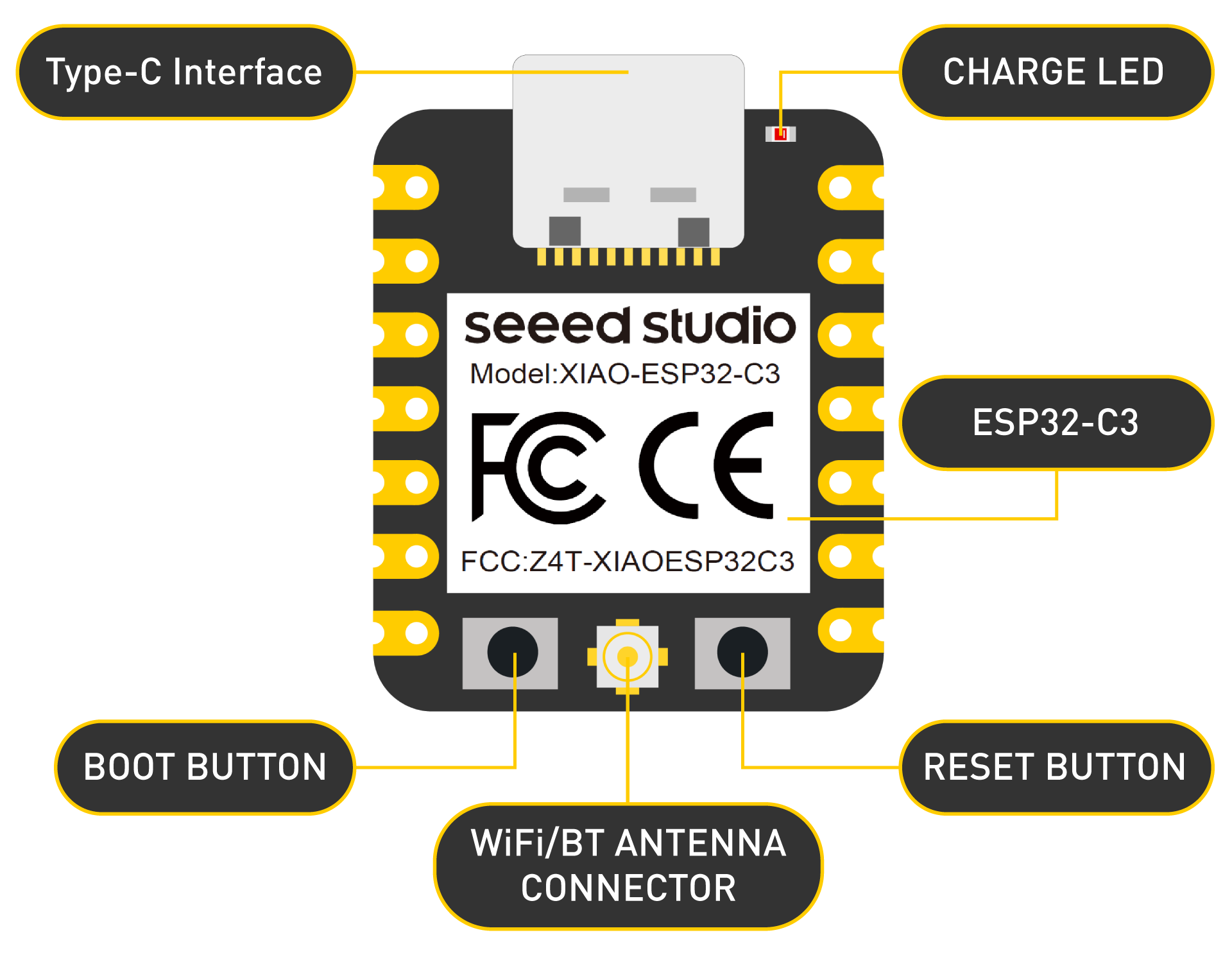
XIAO ESP32C3 back indication diagram
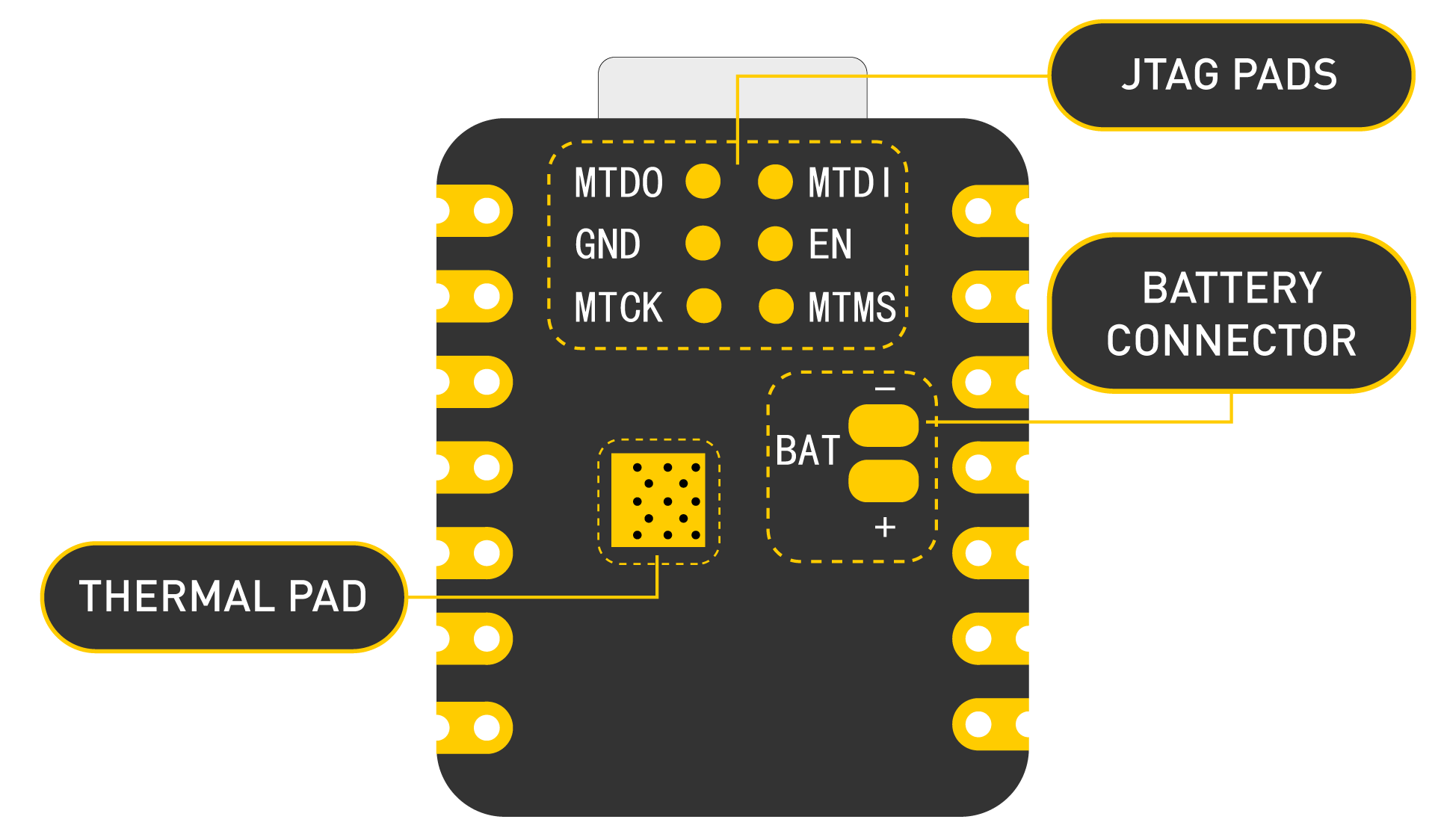
XIAO ESP32C3 Pin List
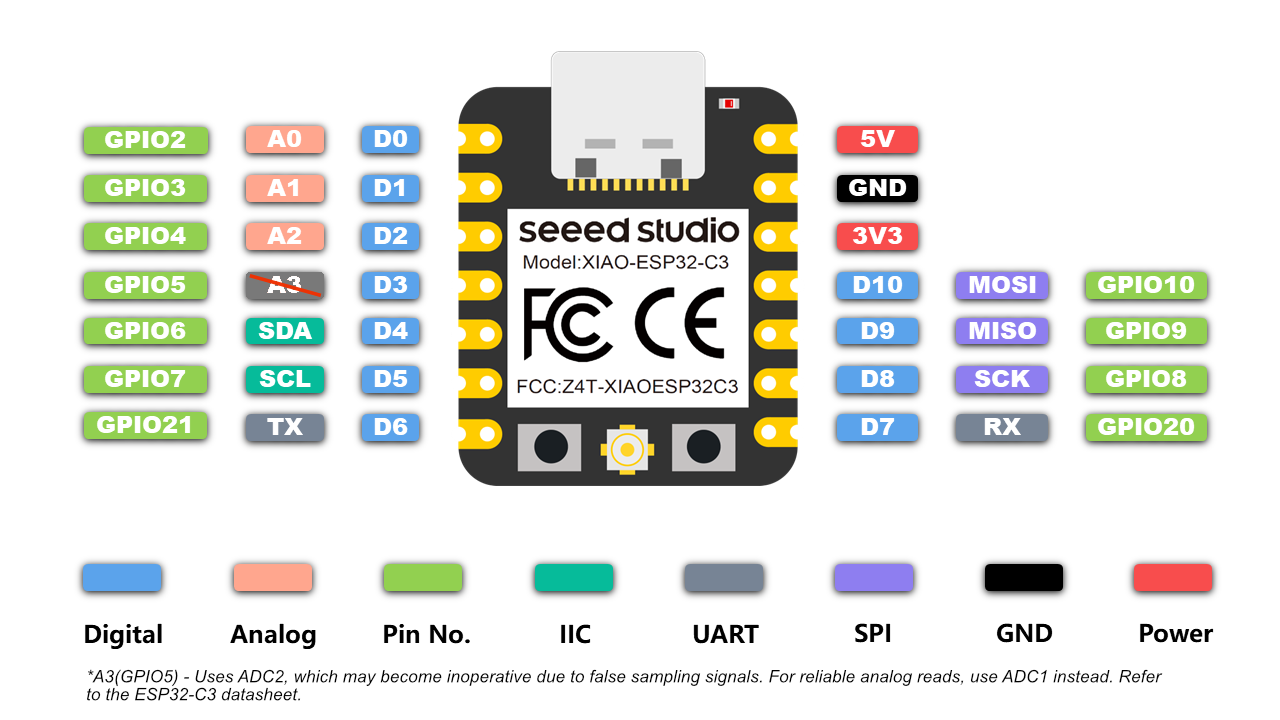
Seeed Studio XIAO ESP32-C3 Power Pin
| Pin | Function |
| 5V | Outputs 5V from the USB port. Can be used as an external input if protected by a diode (Schottky or signal/power type) — connect anode to battery, cathode to 5V pin. |
| 3V3 | Provides a regulated 3.3V output from the onboard voltage regulator. Supports up to 700mA current draw. |
| GND | Common ground pin for power, data, and signal circuits. |
Strapping Pins
⚠️ Strapping Pin Advisory for ESP32-C3 (XIAO)
According to the ESP32-C3 datasheet, GPIO2, GPIO8, and GPIO9 are designated as strapping pins. Their logic states during power-up determine the chip’s boot mode.
🔧 Important Note When configuring or using these pins in your application, ensure they are not unintentionally pulled high or low at startup. Incorrect levels may cause the XIAO board to enter an undesired boot state, which can lead to program upload failure or prevent code execution altogether.
Seeed Studio XIAO ESP32-C3 Software Preparation
🚀 Getting Started with Arduino IDE
Step 1: Download and install the latest version of Arduino IDE based on your operating system (Windows, macOS, or Linux). 🔗 Official Download Page
Step 2: Launch the Arduino application once installation is complete.
Step 3: Add the ESP32 board support package by navigating to:
Arduino IDE > Preferences > Additional Board Manager URLs Paste: https://raw.githubusercontent.com/espressif/arduino-esp32/gh-pages/package_esp32_index.json Then go to: Tools > Board > Board Manager and search for “ESP32” to install.Navigate to File > Preferences, and fill "Additional Boards Manager URLs" with the url below: https://jihulab.com/esp-mirror/espressif/arduino-esp32.git
Navigate to Tools > Board > Boards Manager..., type the keyword "esp32" in the search box, select the latest version of esp32, and install it.
Step 4. Select your board and port
Board
Navigate to Tools > Board > ESP32 Arduino and select "XIAO_ESP32C3". The list of board is a little long and you need to roll to the bottom to reach it.
Run Your First Program on Seeed Studio XIAO ESP32-C3
🔧 Step 1: Upload the Code in Arduino IDE
Ensure an LED is connected to D10, as shown in the wiring diagram.
// Define LED pin based on XIAO ESP32-C3 layout
const int led = D10; // Note: LED_BUILTIN is not available on this board
void setup() {
pinMode(led, OUTPUT); // Initialize pin as output
}
void loop() {
digitalWrite(led, HIGH); // Turn LED on
delay(1000); // Wait 1 second
digitalWrite(led, LOW); // Turn LED off
delay(1000); // Wait 1 second
}
🧱 Step 2: Upload the Sketch
Click the Upload button in Arduino IDE to send the code to your board.
✅ Once successfully uploaded, the LED will blink every second — confirming your board is communicating correctly and ready for further experiments!
Seeed Studio XIAO ESP32-C3 Battery Usage
🔋 Battery Power Input Overview
The XIAO ESP32-C3 supports a 3.7V lithium battery as a power input source. To ensure proper operation, connect the battery following the recommended wiring method shown in the diagram below.
📎 Be sure to observe correct polarity and connection pads to avoid damage or malfunction.
🔋 Battery Usage Guidelines for XIAO ESP32-C3
-
Use Certified Batteries Please ensure you're using qualified 3.7V lithium batteries that meet the recommended specifications for safe and stable performance.
-
Charging While Connected It's safe to connect your XIAO ESP32-C3 to a computer via USB while running on battery power. The board includes an integrated protection chip, providing secure operation during charging and data transfer.
-
LED Behavior on Battery Power When powered solely by battery, the LEDs will not illuminate by default unless explicitly controlled by your program. ⚠️ Do not rely on LED status to determine whether the board is functioning — instead, verify through serial output or programmed behavior.
-
Battery Level Monitoring Limitation The current hardware design does not support native battery voltage monitoring via software, due to pin constraints in the ESP32-C3 architecture. 🔧 You’ll need to charge regularly or use a multimeter to measure remaining battery capacity.
📏 Optional Voltage Monitoring Setup
If you’d like to implement battery voltage sensing manually, you can reference the brilliant approach by msfujino (special thanks for their contribution! 🙌):
-
📐 Method: Use a voltage divider (e.g., two 200kΩ resistors) to halve the battery voltage and connect it to the A0 (ADC) pin. This allows safe analog measurement without exceeding the ADC input limit.
Seeed Studio XIAO ESP32-C3 Deep Sleep Mode and Wake-up
🔋 Battery Voltage Measurement on XIAO ESP32-C3
According to the ESP32-C3 datasheet, the default ADC full-scale voltage is approximately 2500 mV, but may vary by ±10% across individual chips. ➡️ For example, one chip may read up to 2700 mV as full scale.
✅ Fortunately, each chip has a calibrated reference value stored in the fuse area, which can be accessed using: analogReadMilliVolts()
This function automatically applies the appropriate correction factor, enabling accurate voltage readings. 📏 Typical deviation between ADC results and multimeter measurements is ~5 mV, which is acceptable for most practical applications.
⚠️ Note on Data Accuracy During active communication, the ADC may show spike-like fluctuations. To smooth these out, we recommend averaging 16 samples per reading.
🧪 Example Code: Battery Voltage Measurement
void setup() {
Serial.begin(115200);
pinMode(A0, INPUT); // Initialize ADC
}
void loop() {
uint32_t Vbatt = 0;
// Average 16 readings to reduce noise
for (int i = 0; i < 16; i++) {
Vbatt += analogReadMilliVolts(A0); // Read corrected voltage
}
// Adjust for 1/2 voltage divider and convert to volts
float Vbattf = 2 * Vbatt / 16 / 1000.0;
Serial.println(Vbattf, 3); // Print voltage with 3 decimal places
delay(1000);
}

